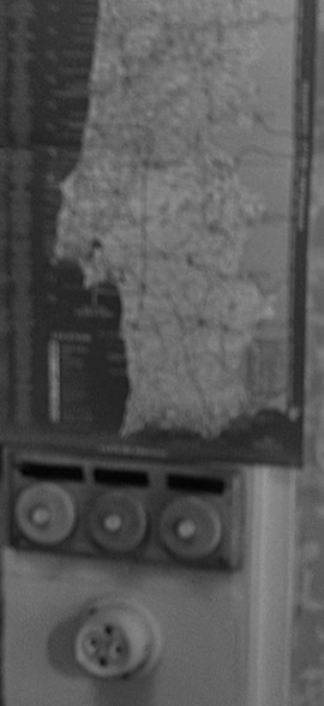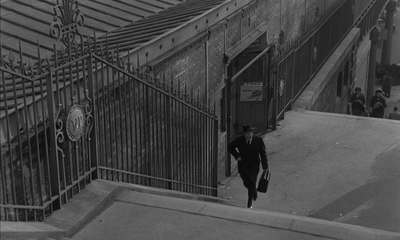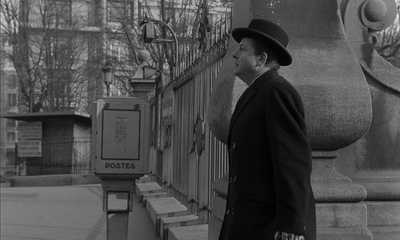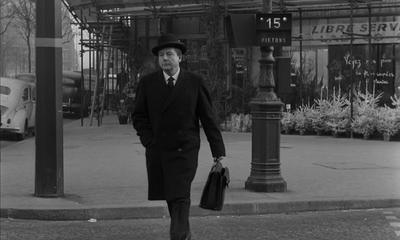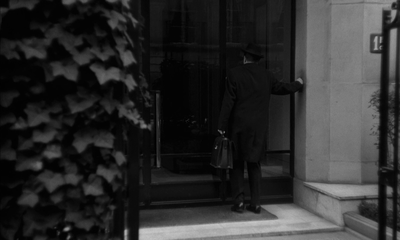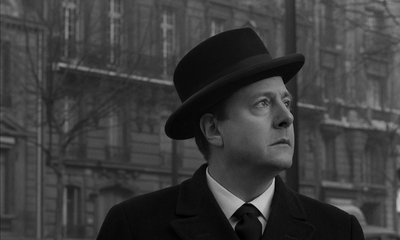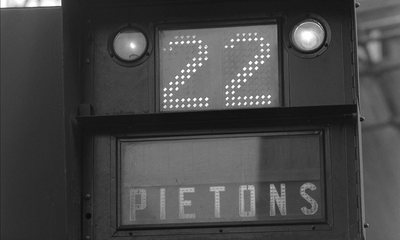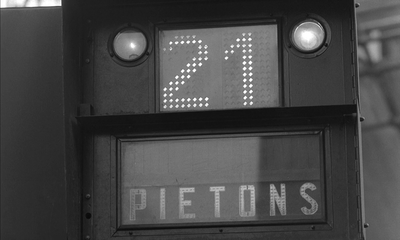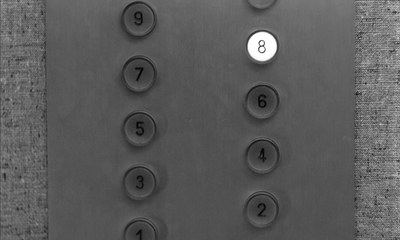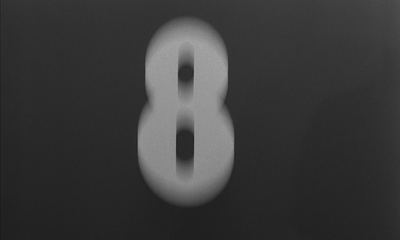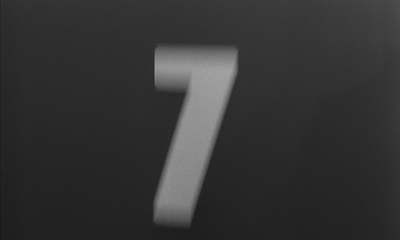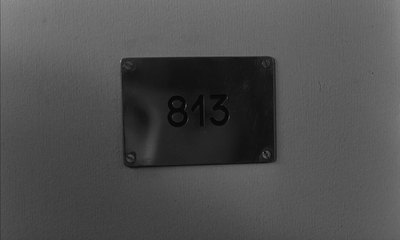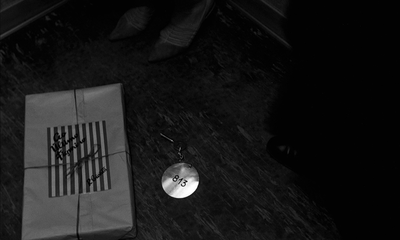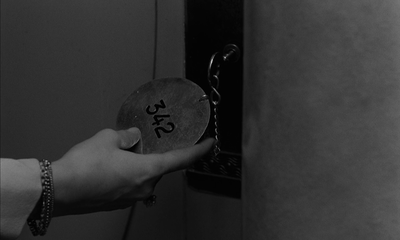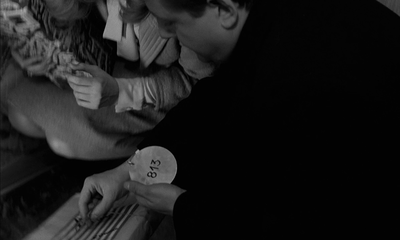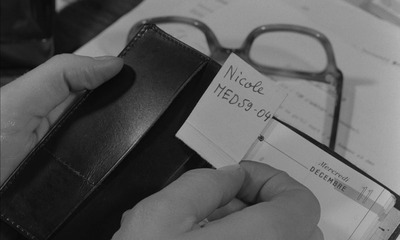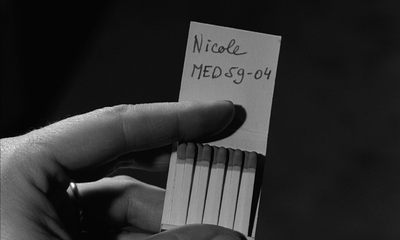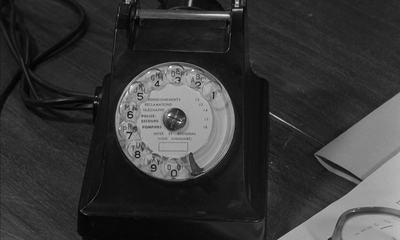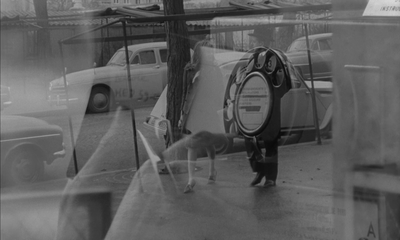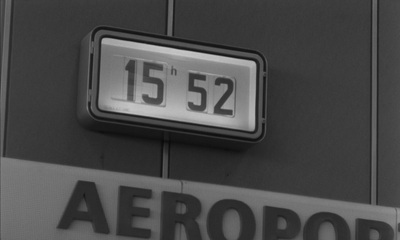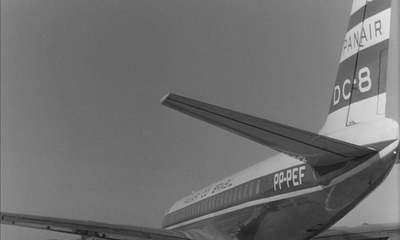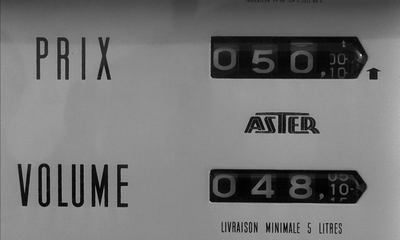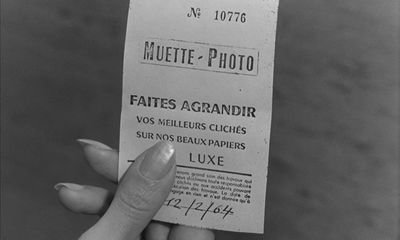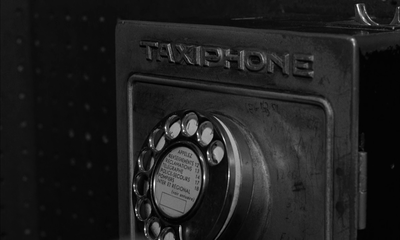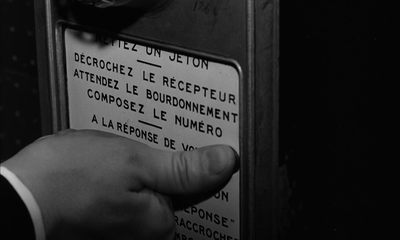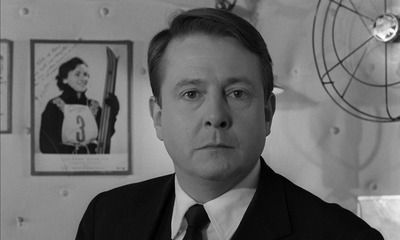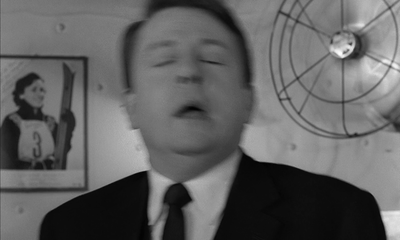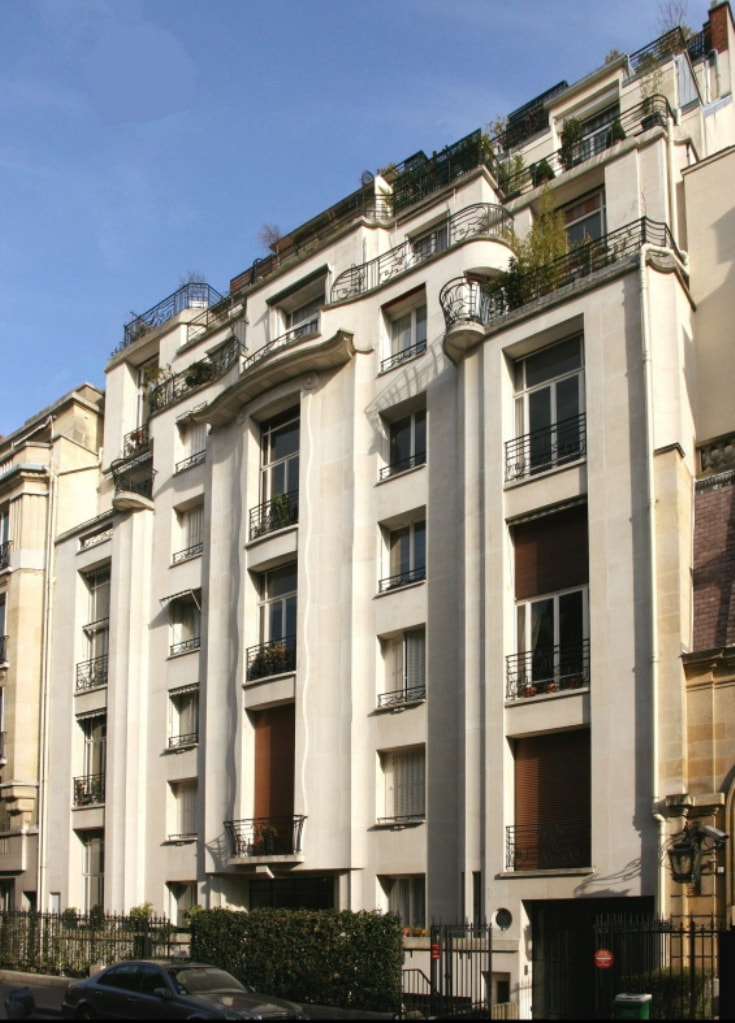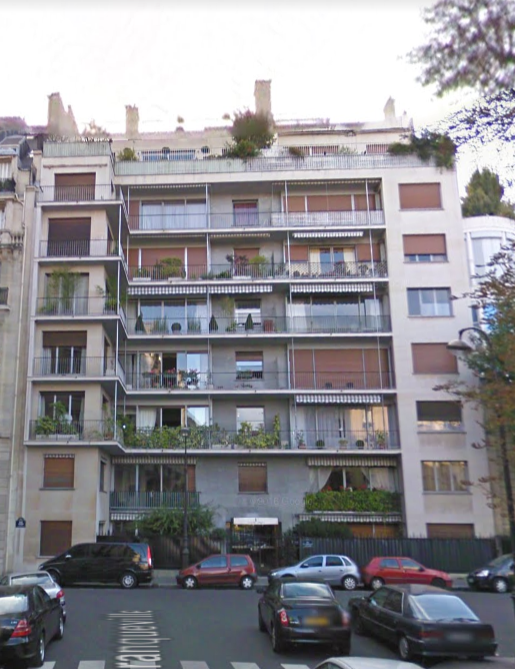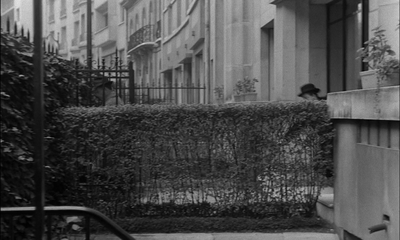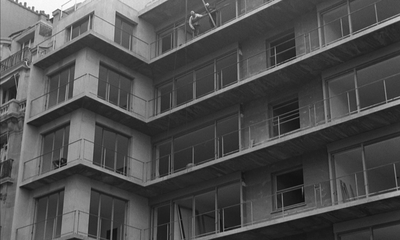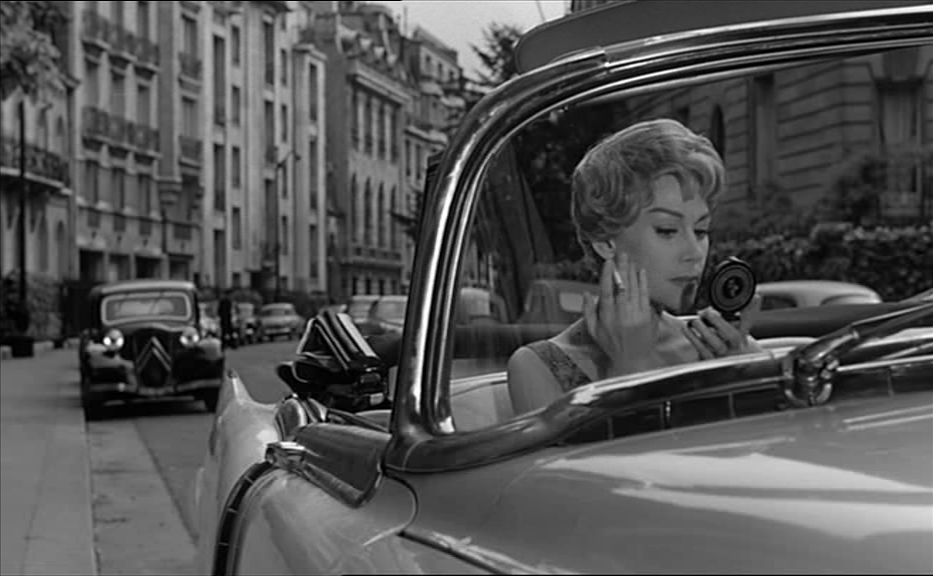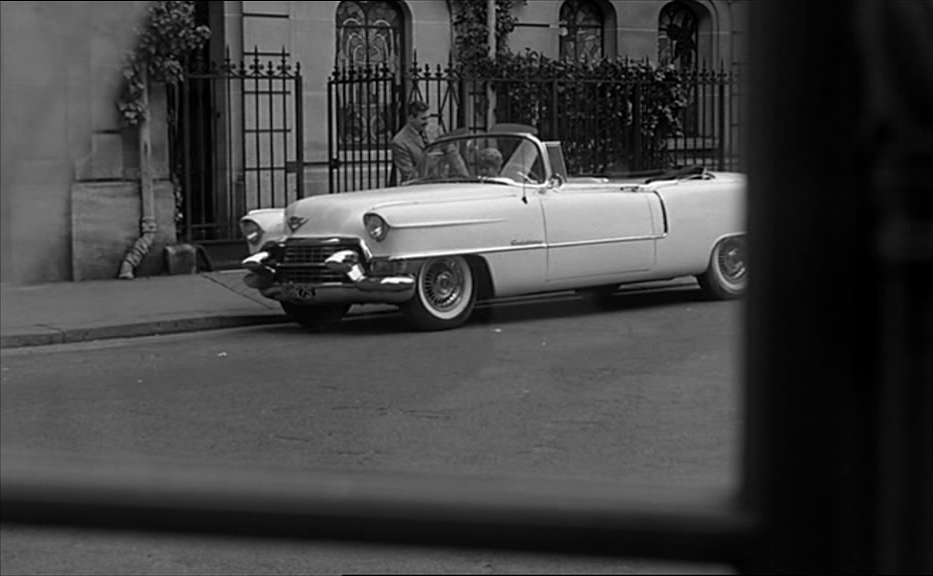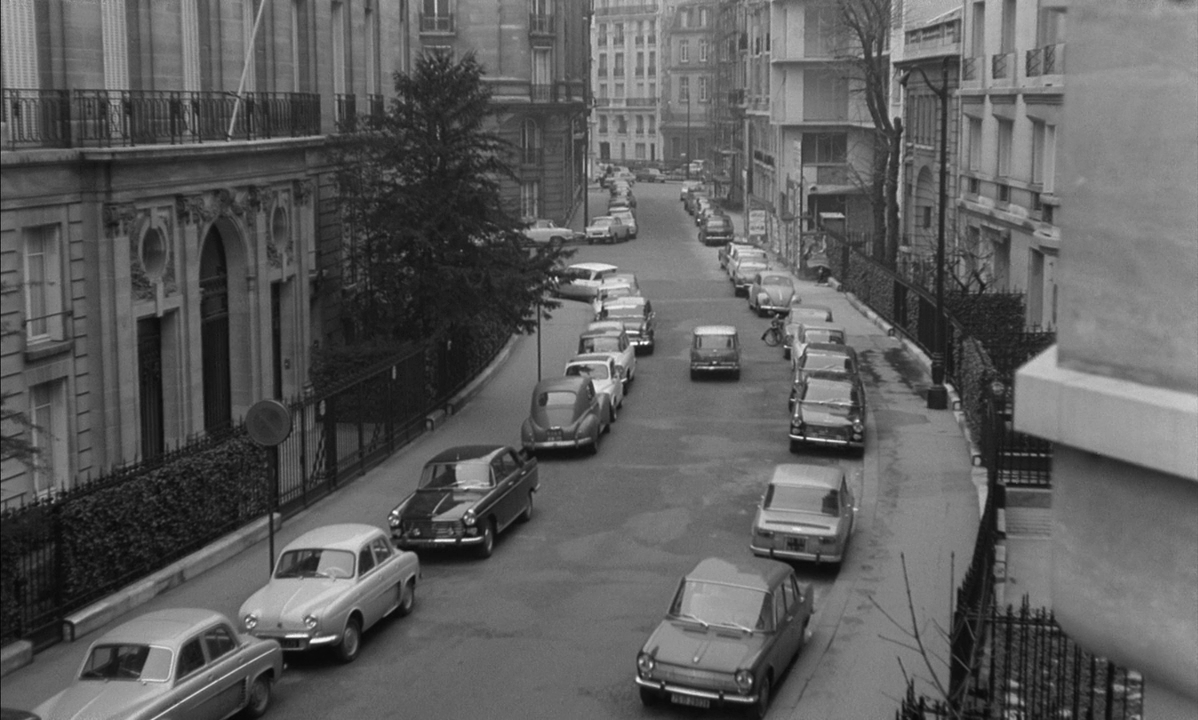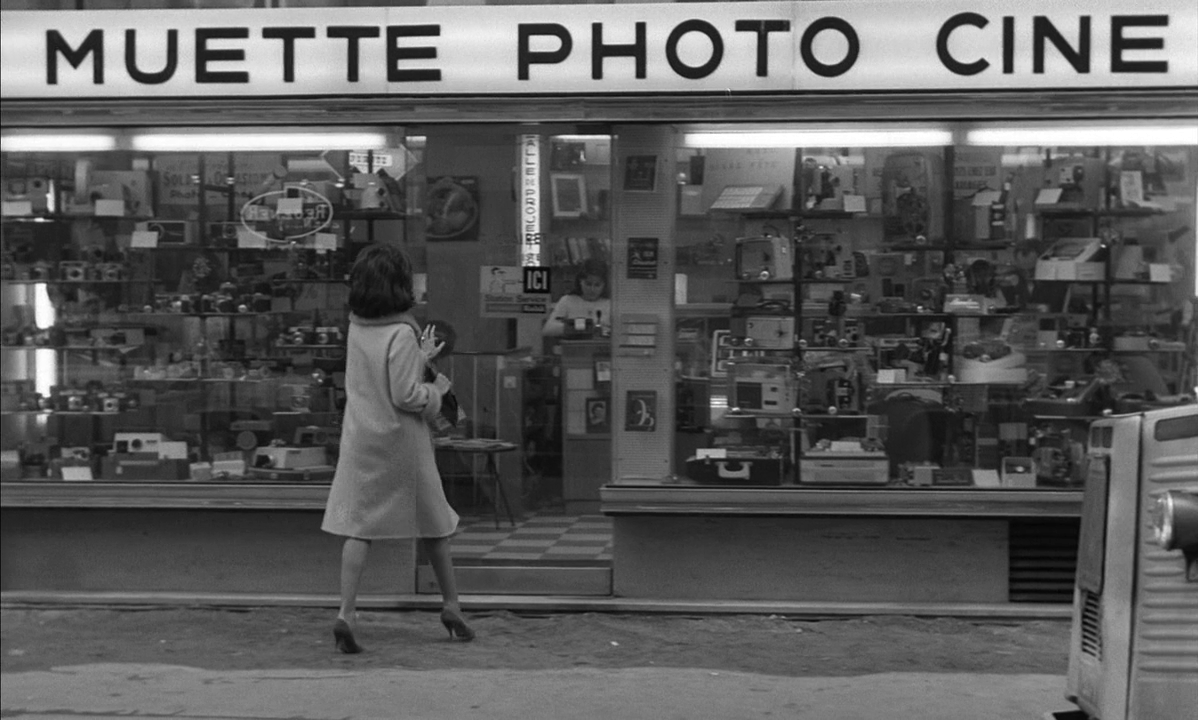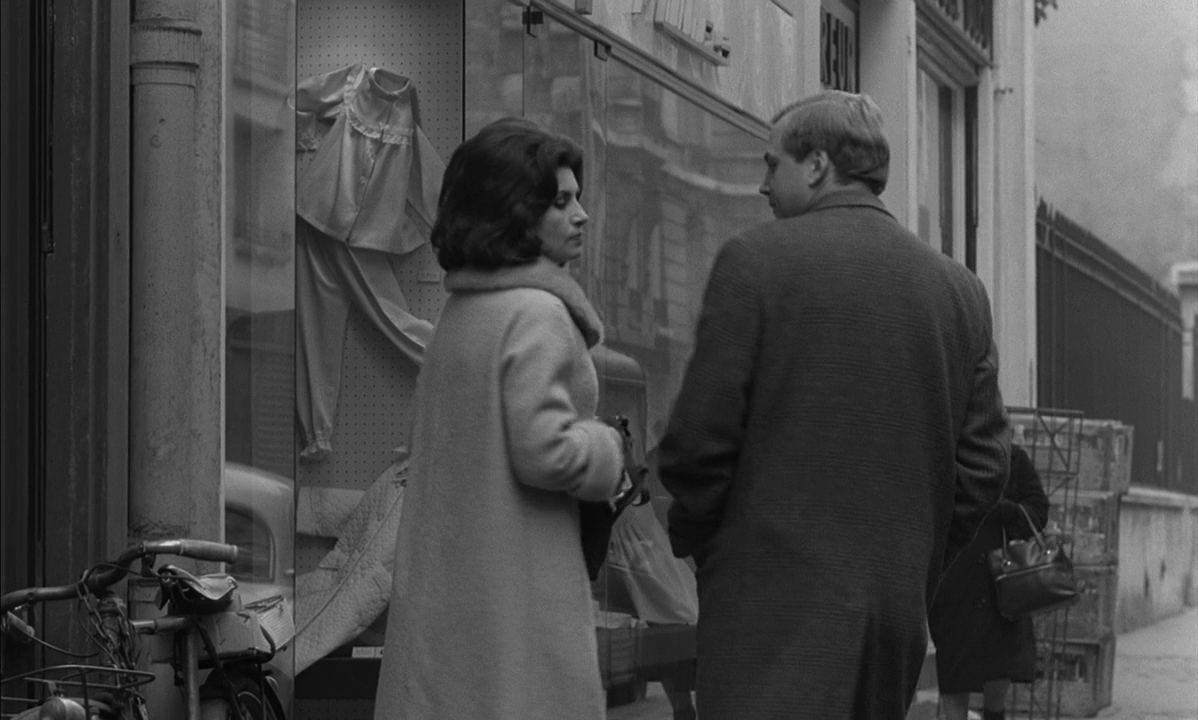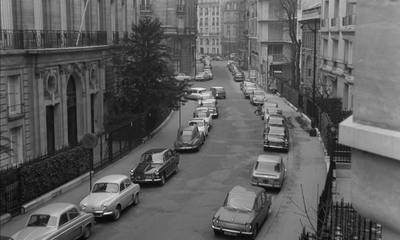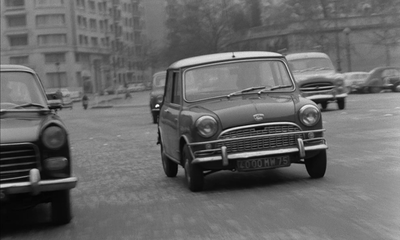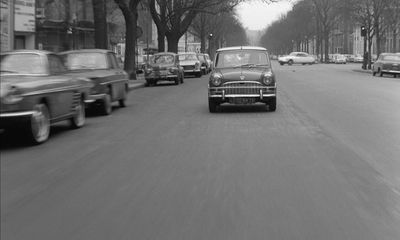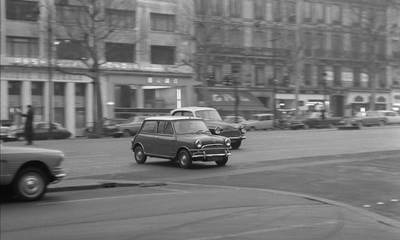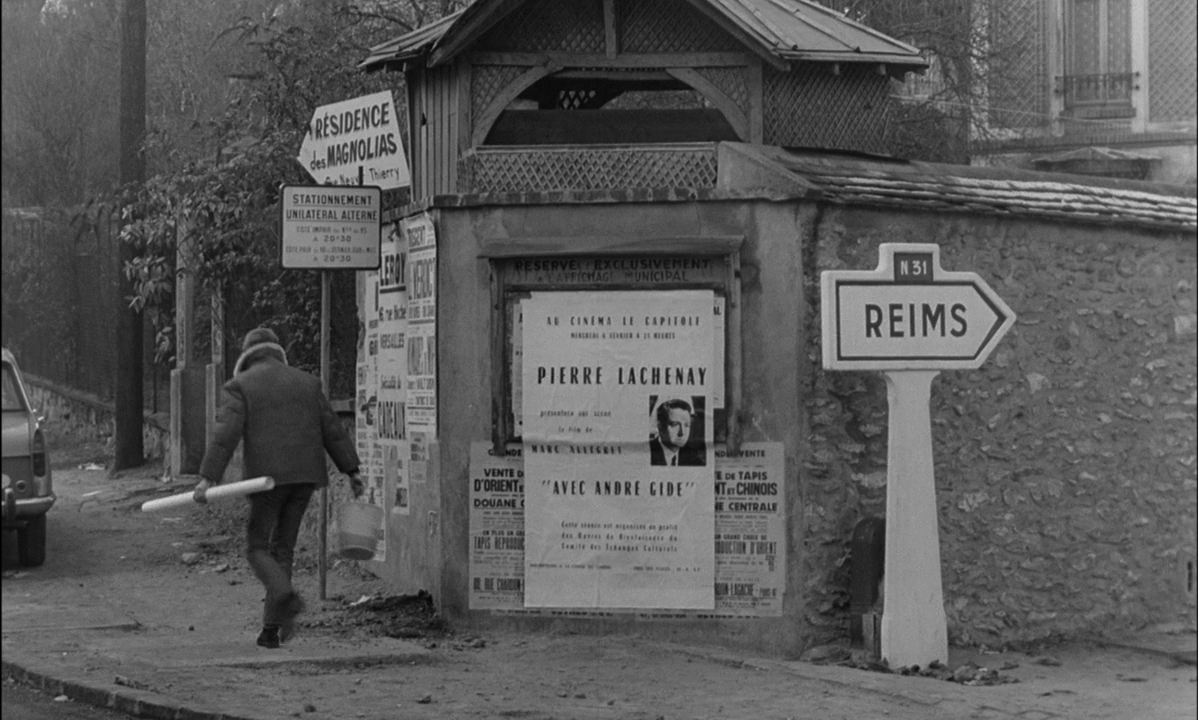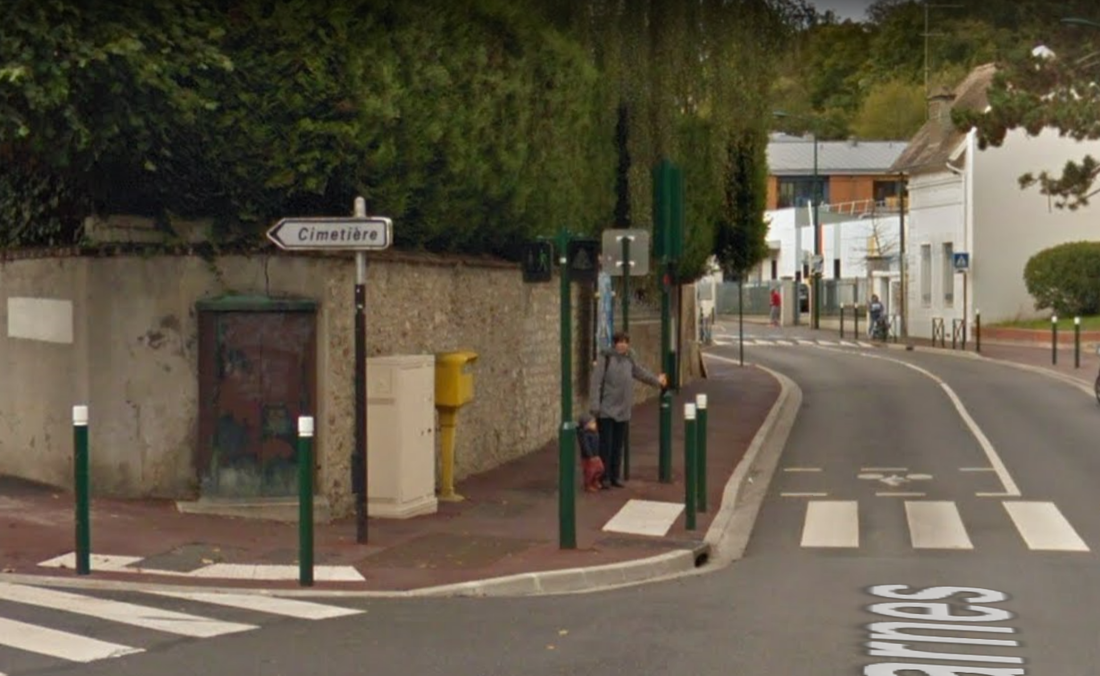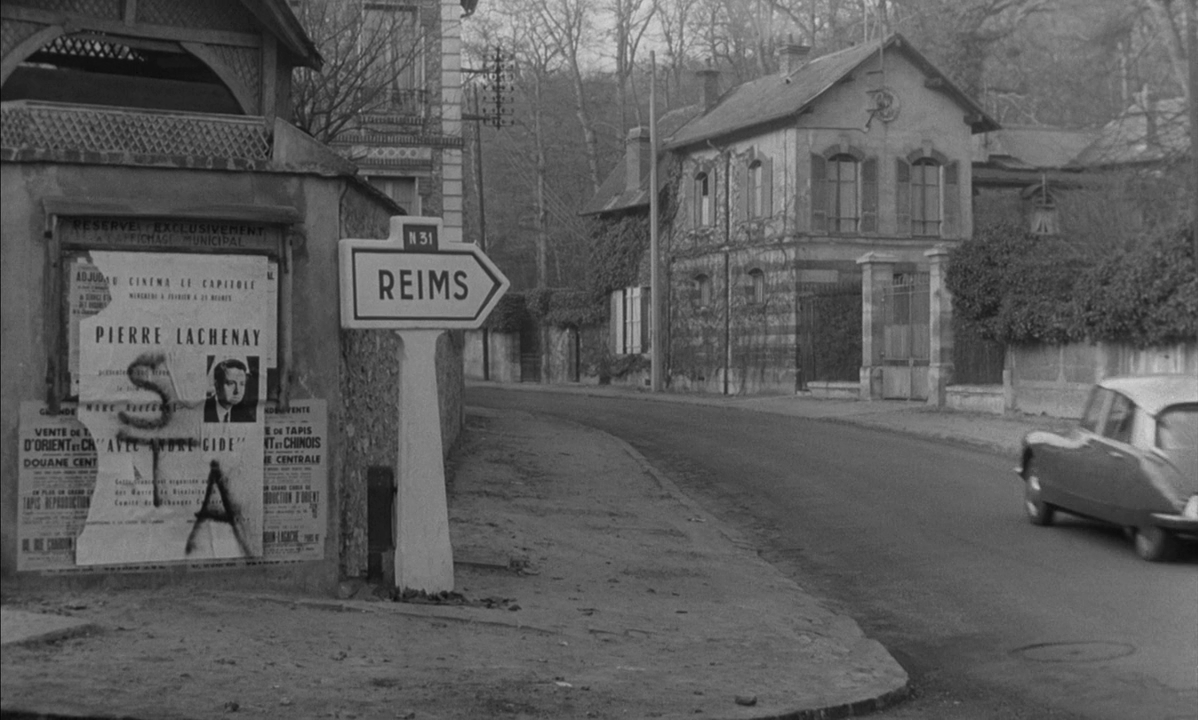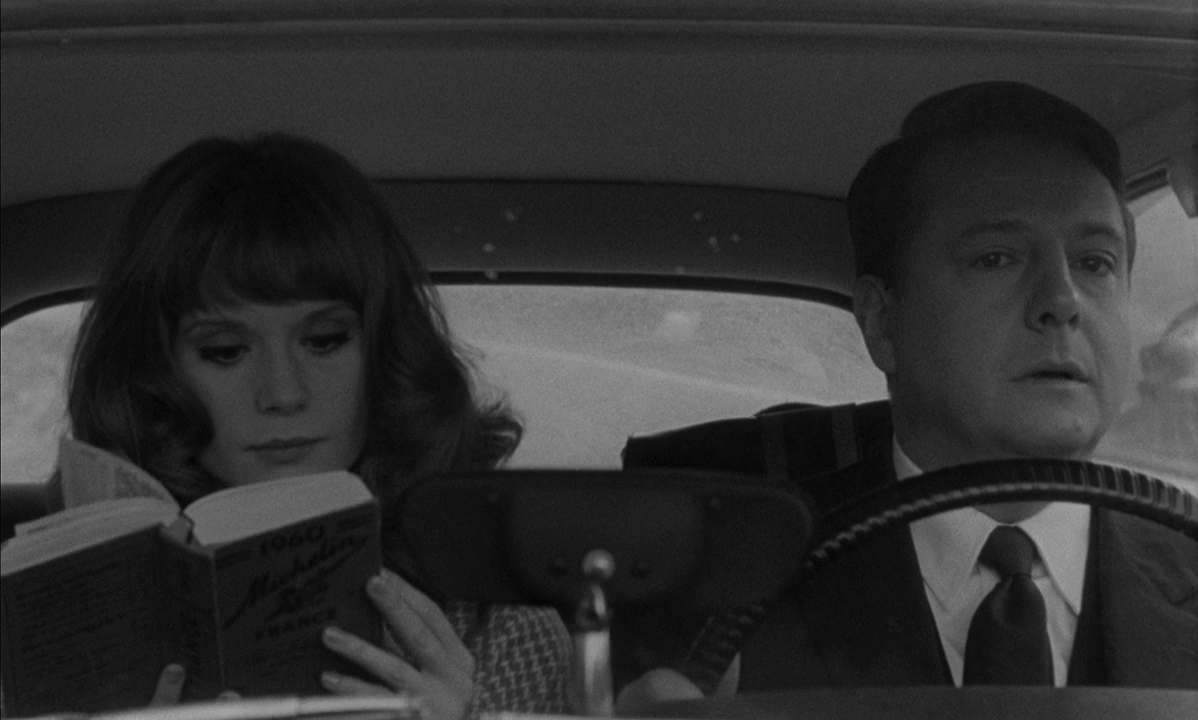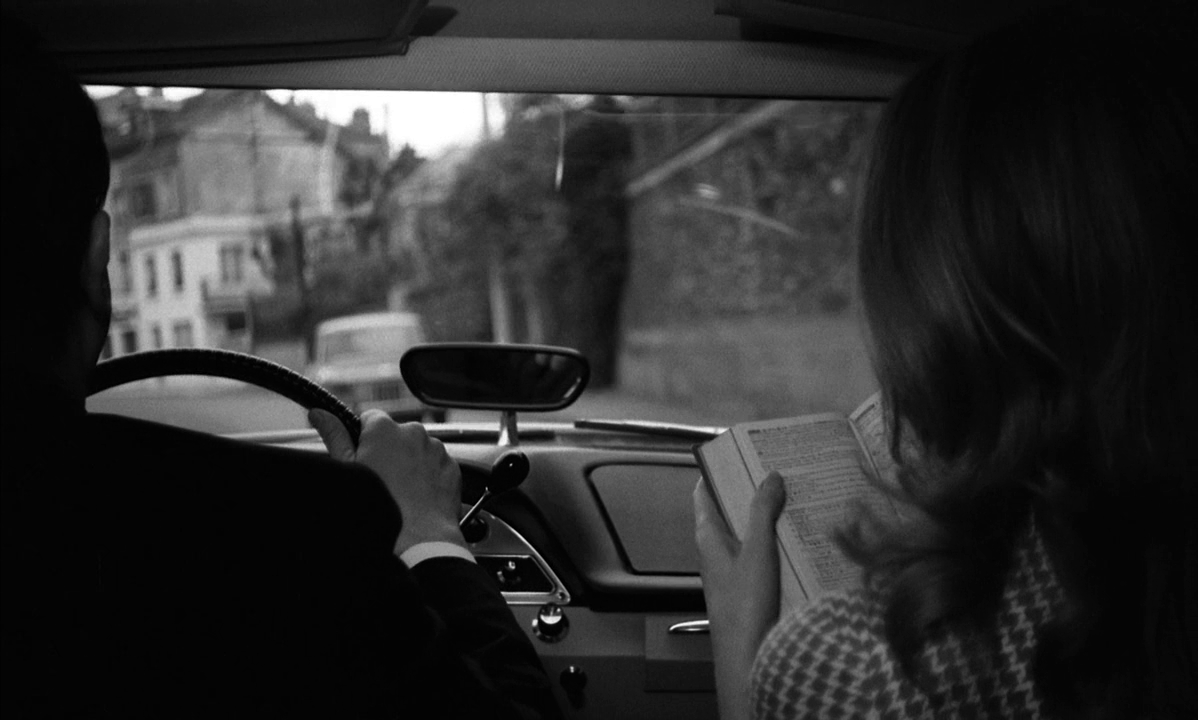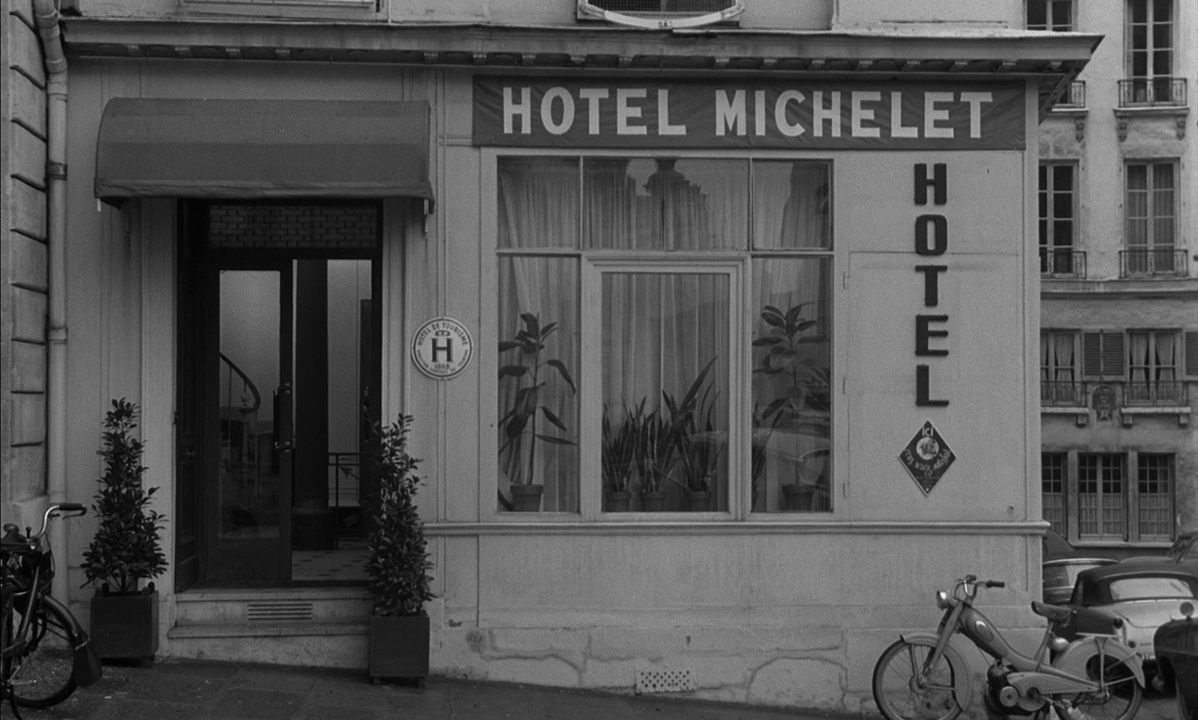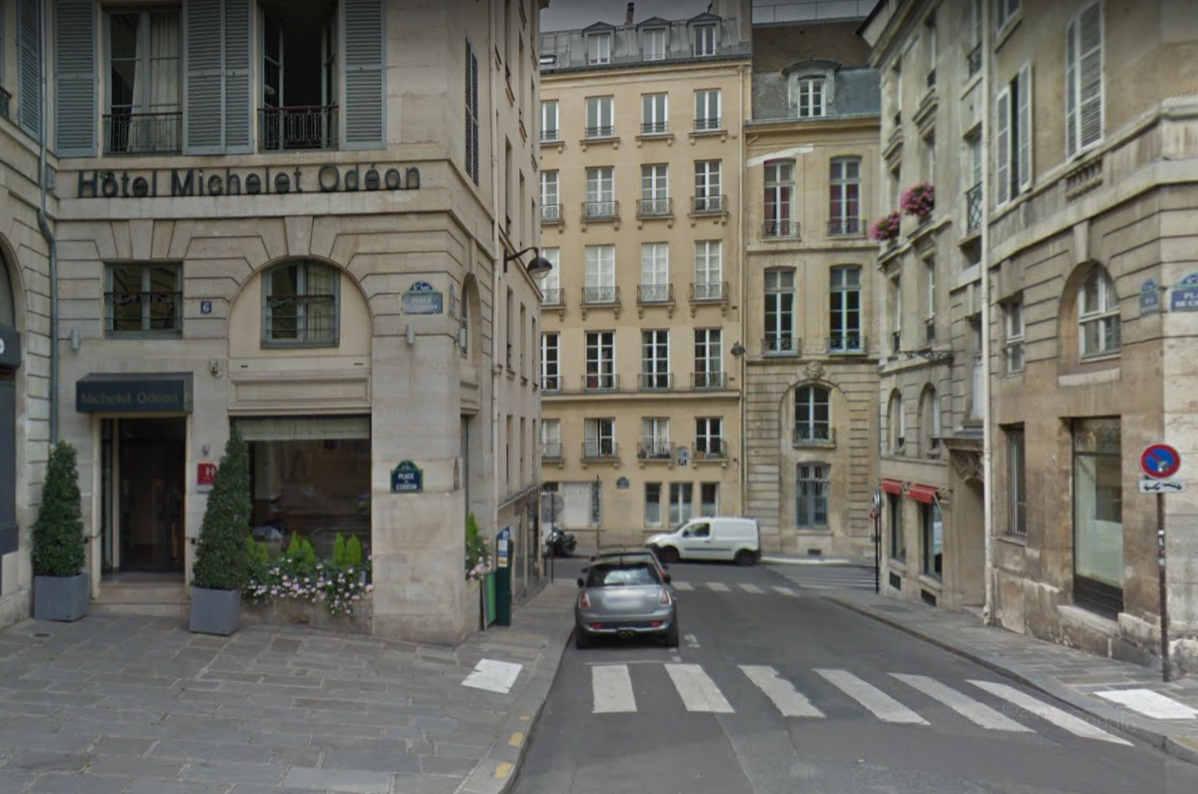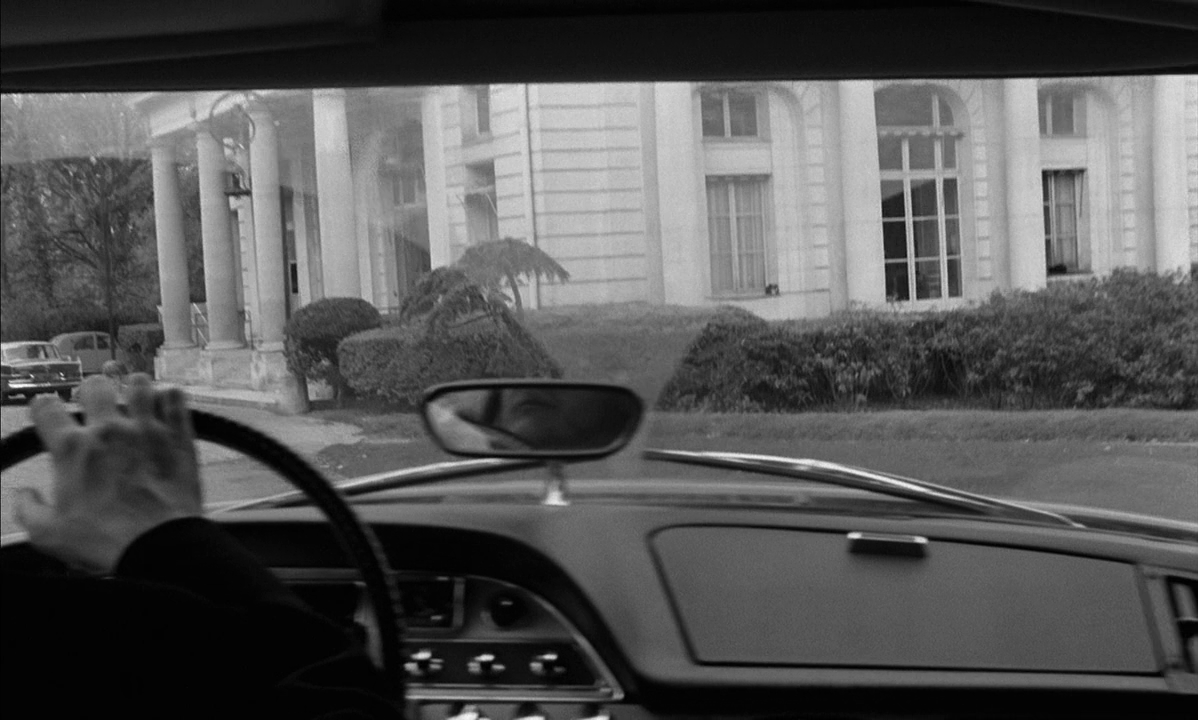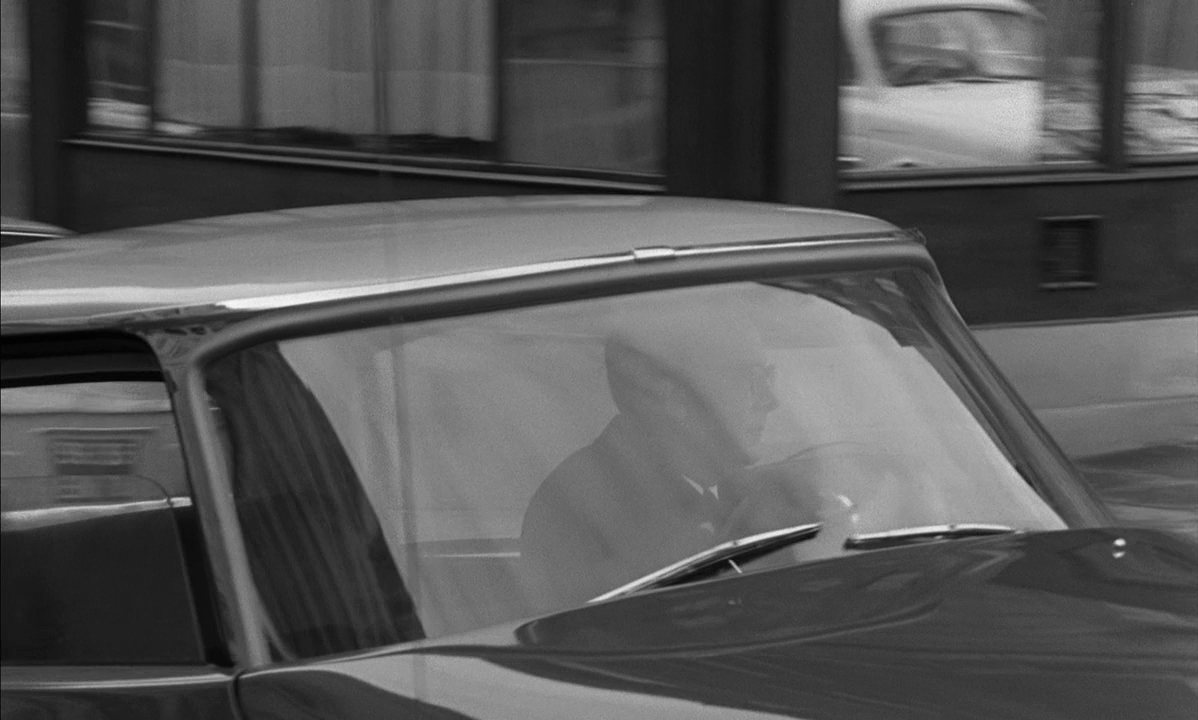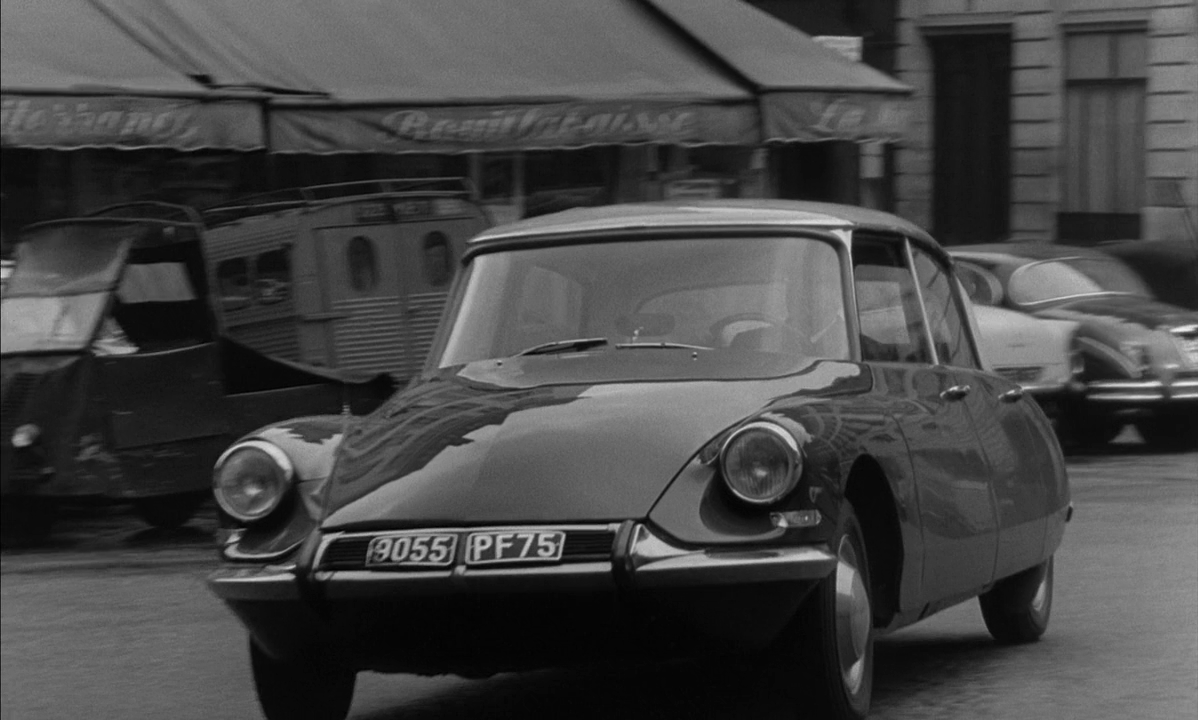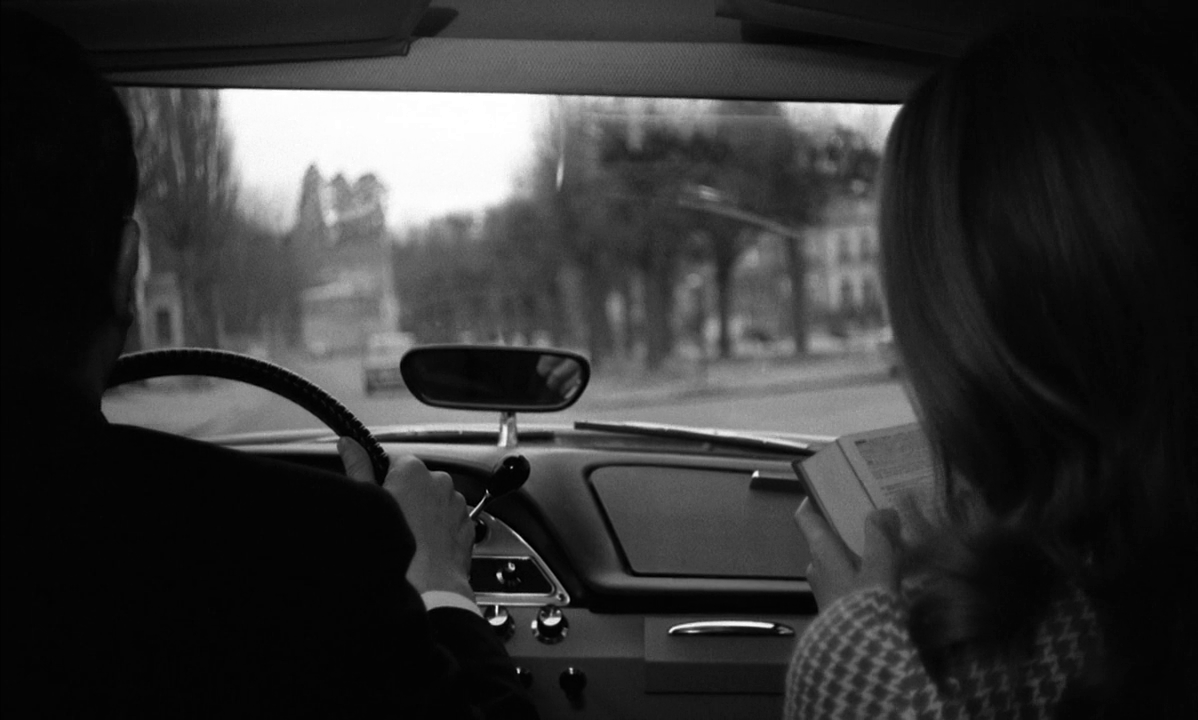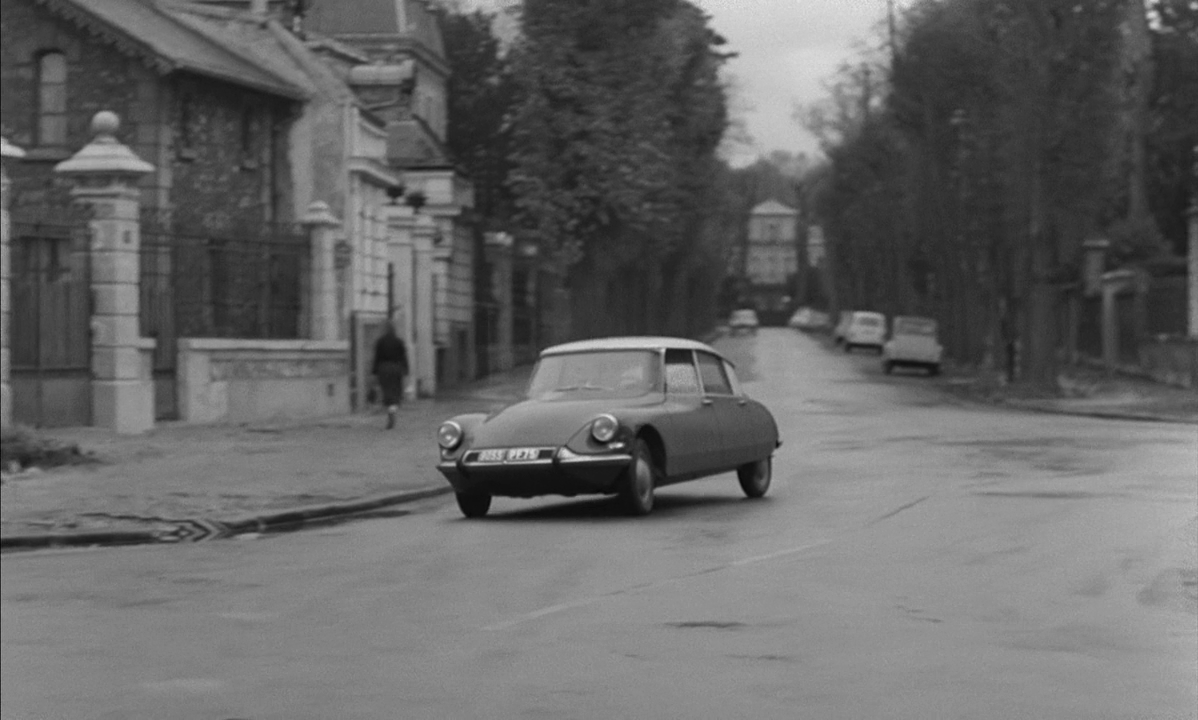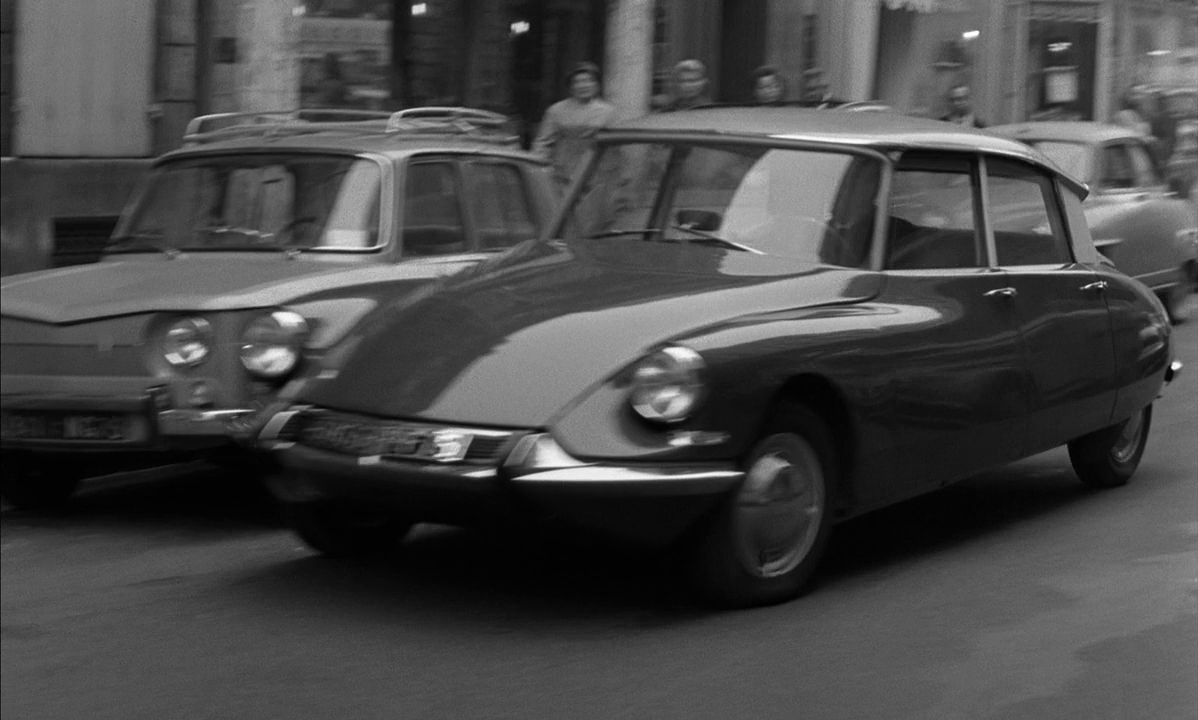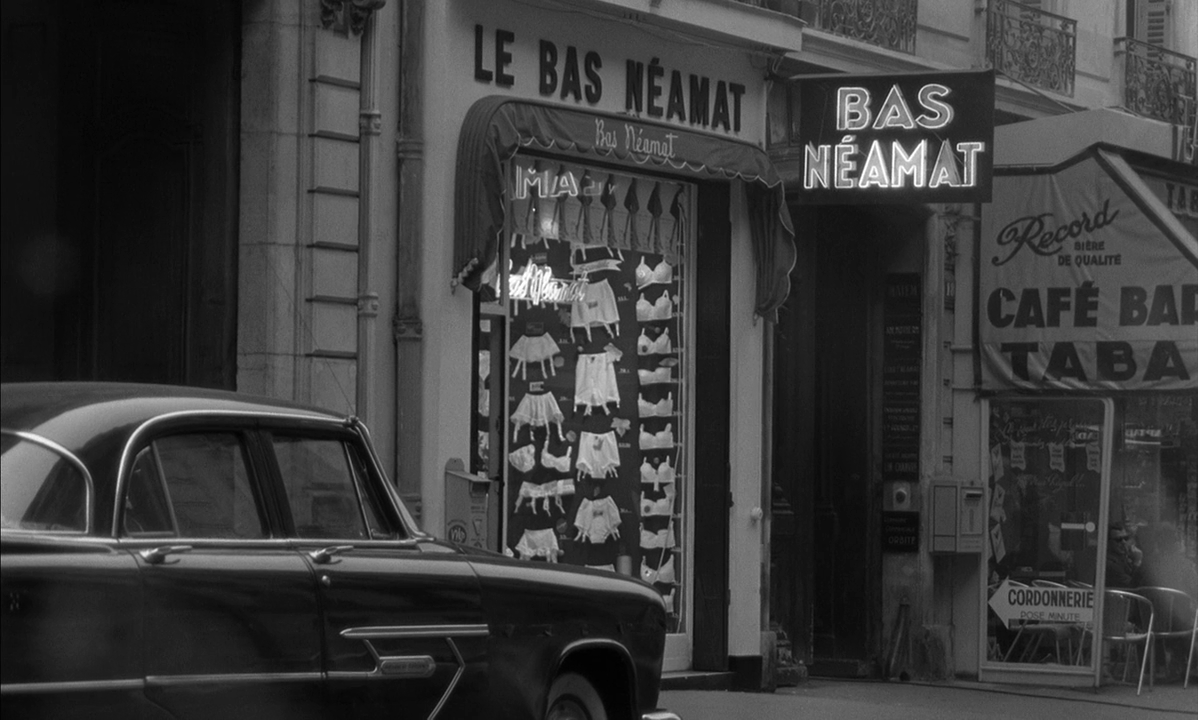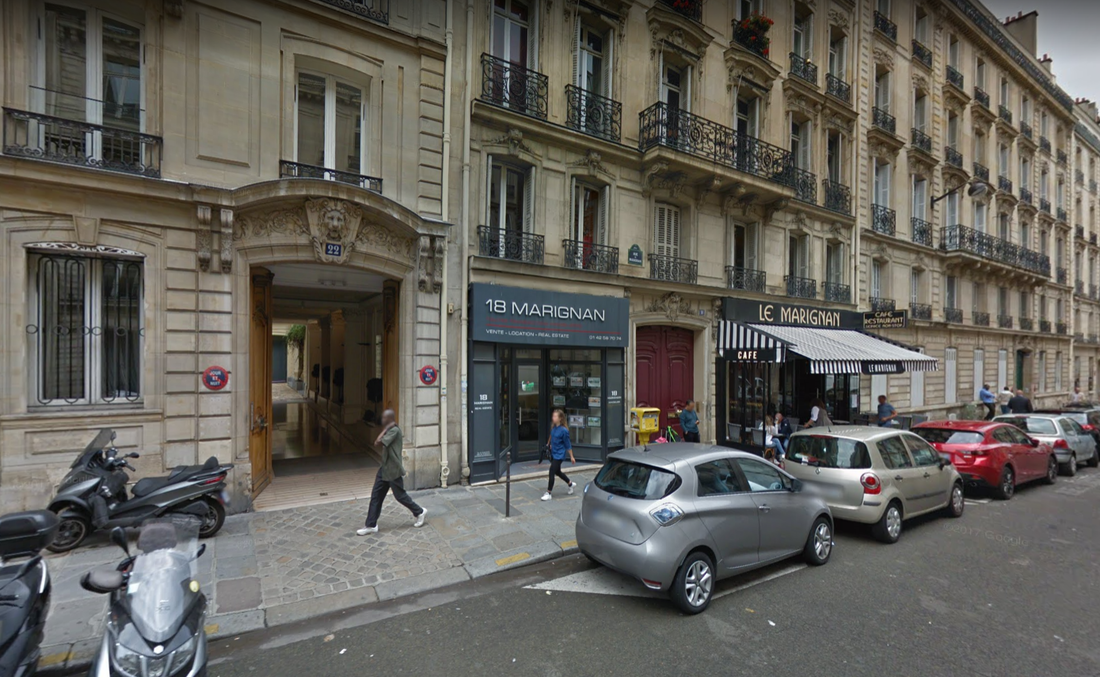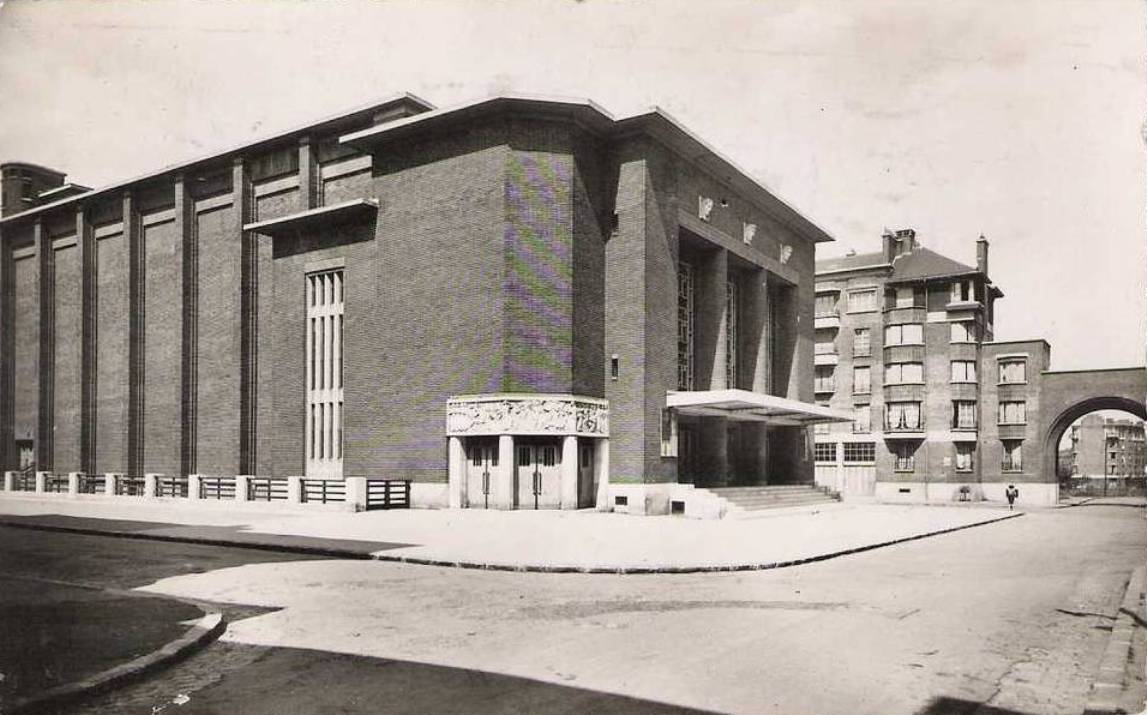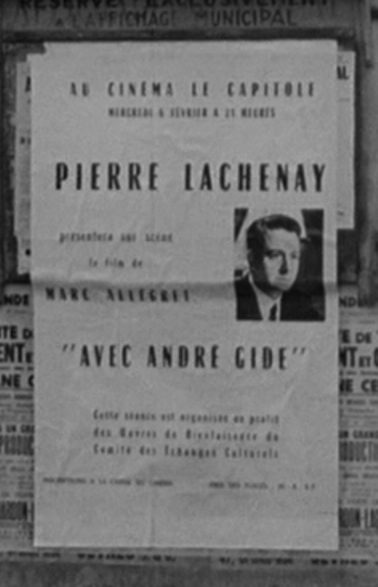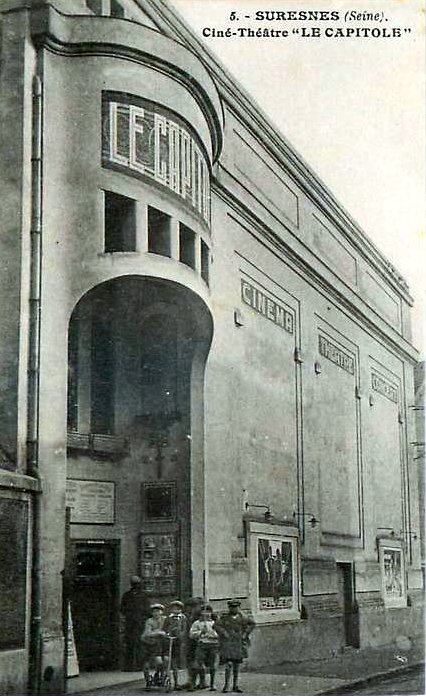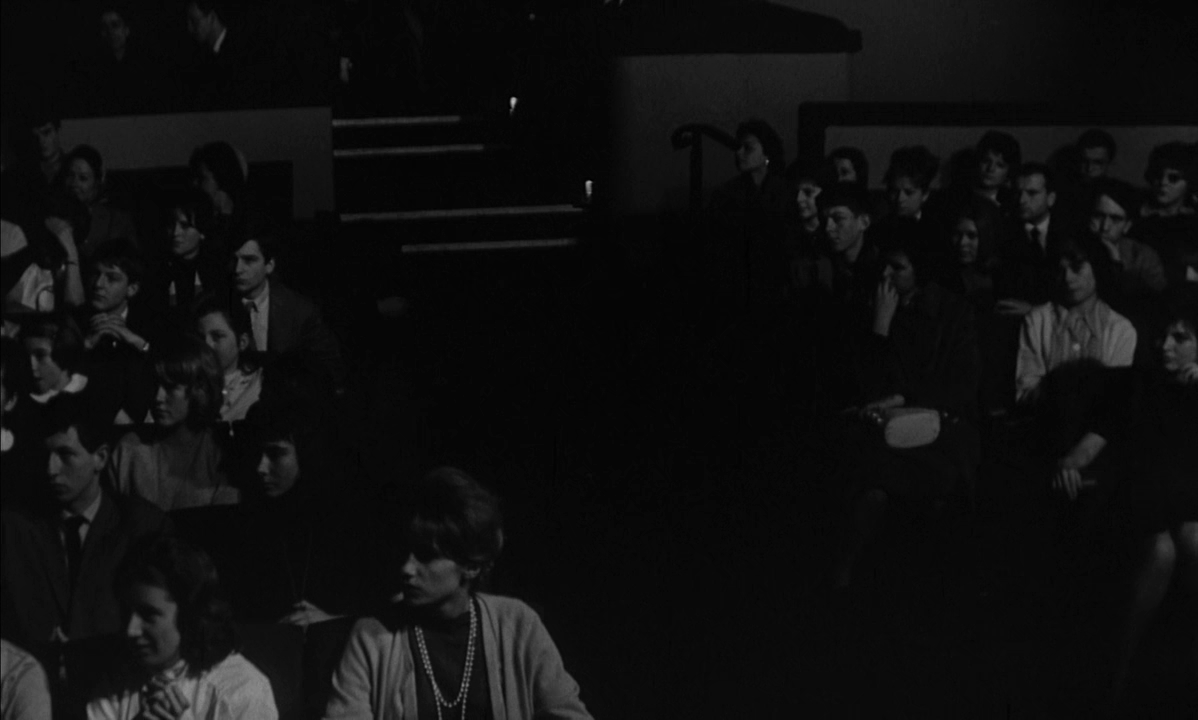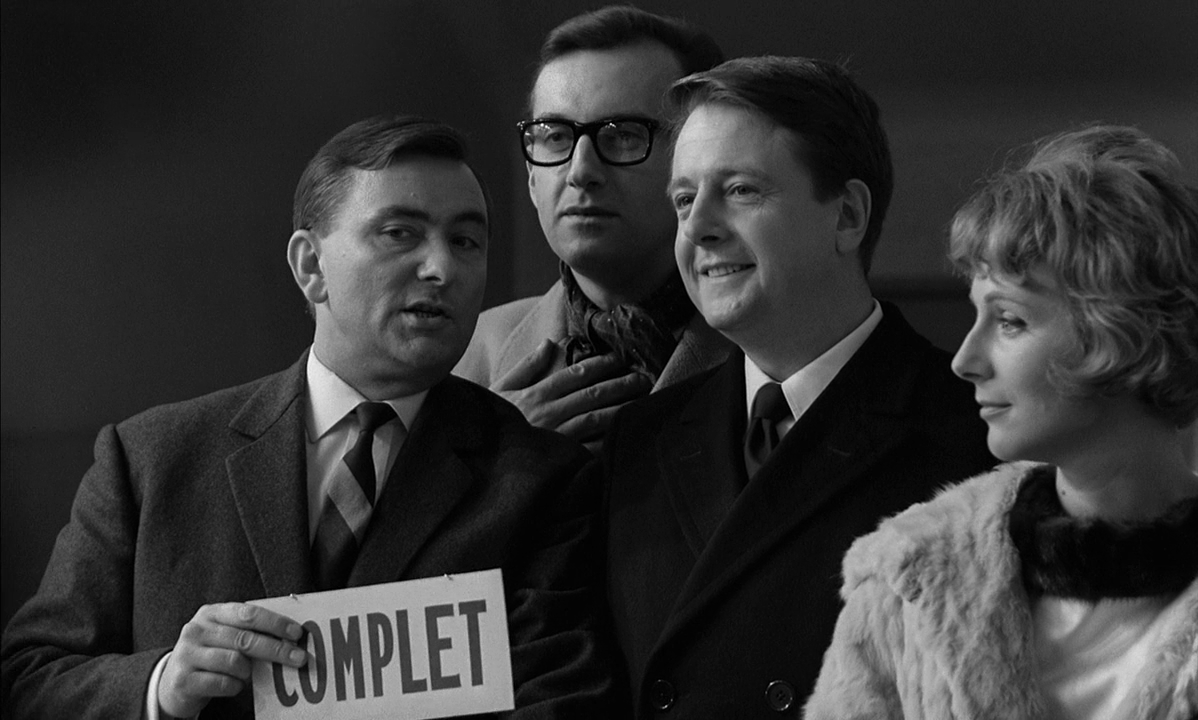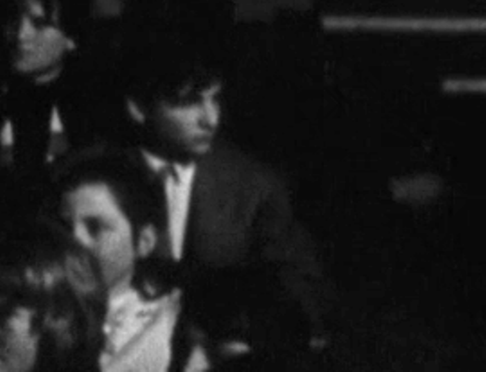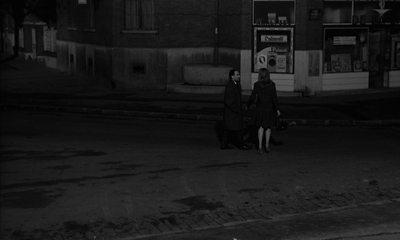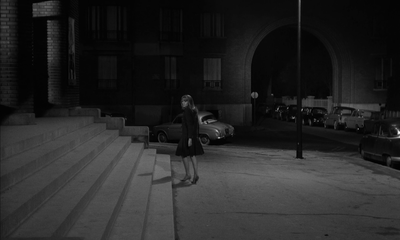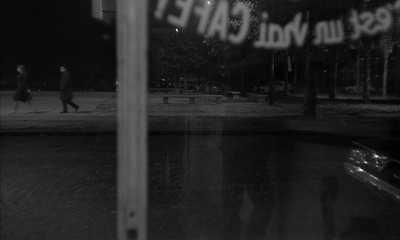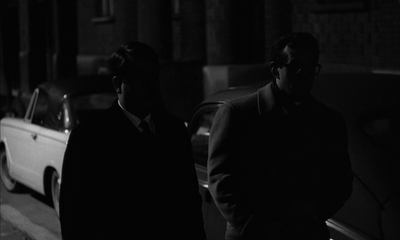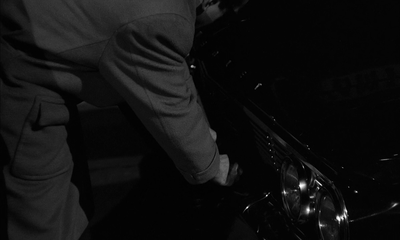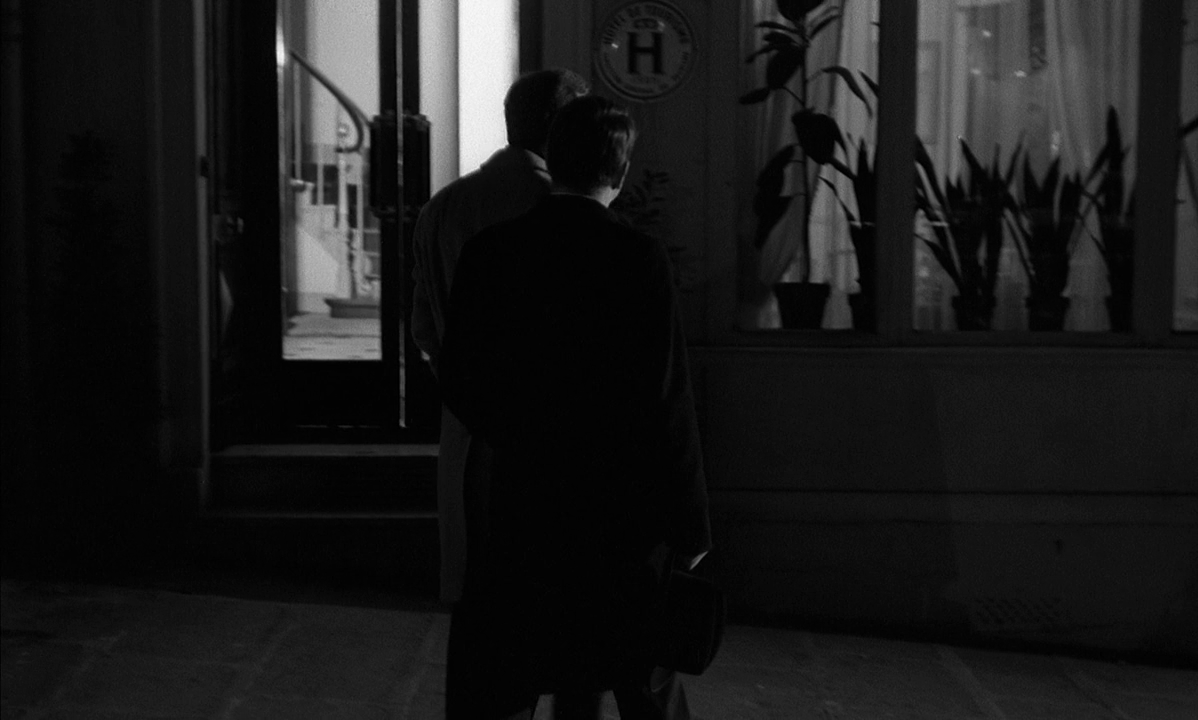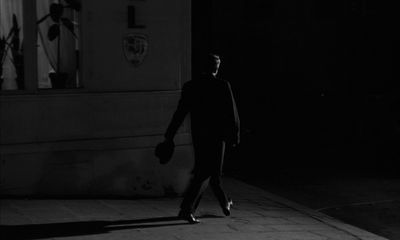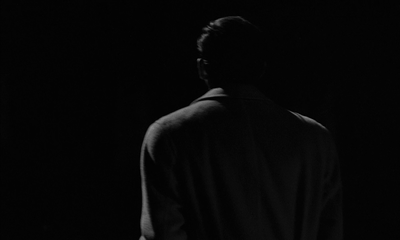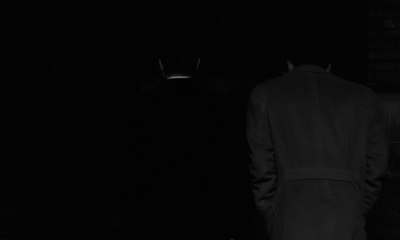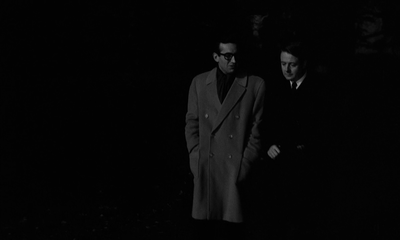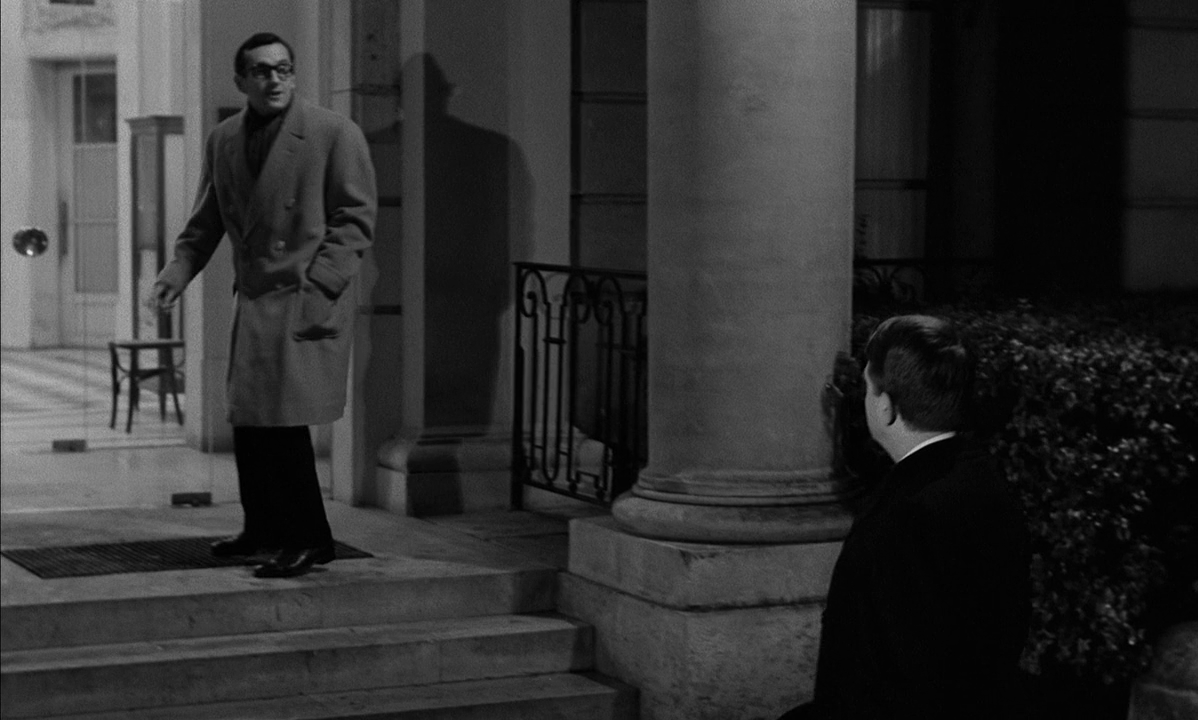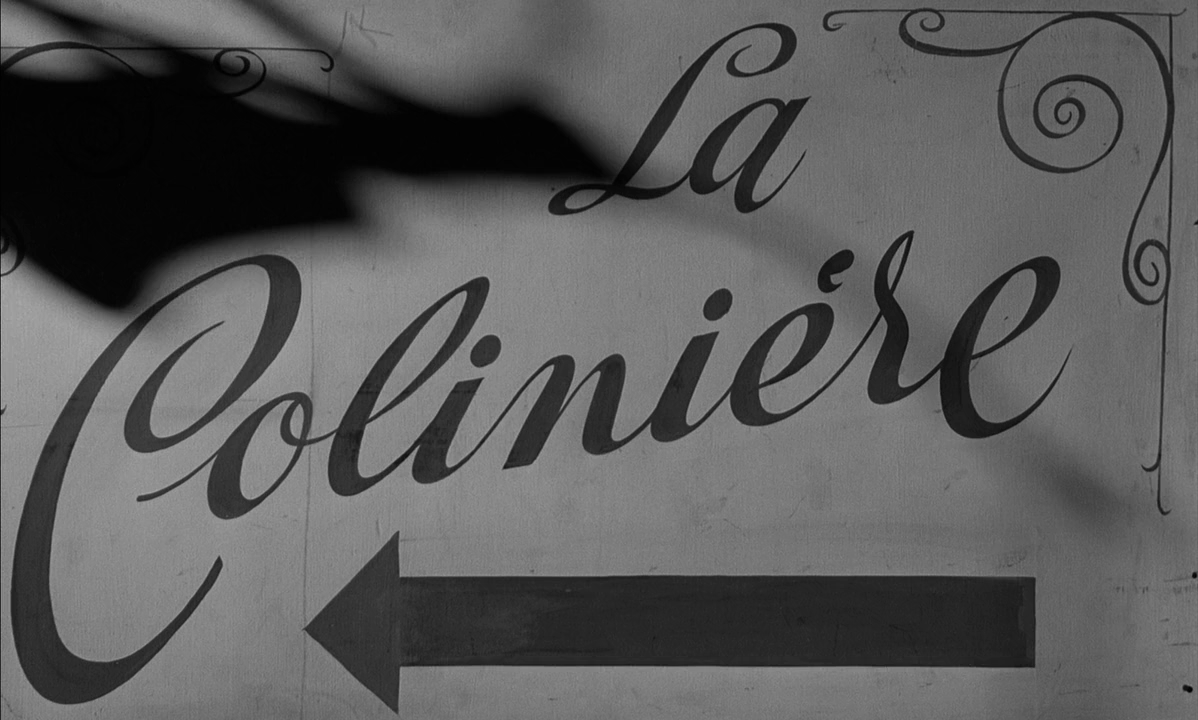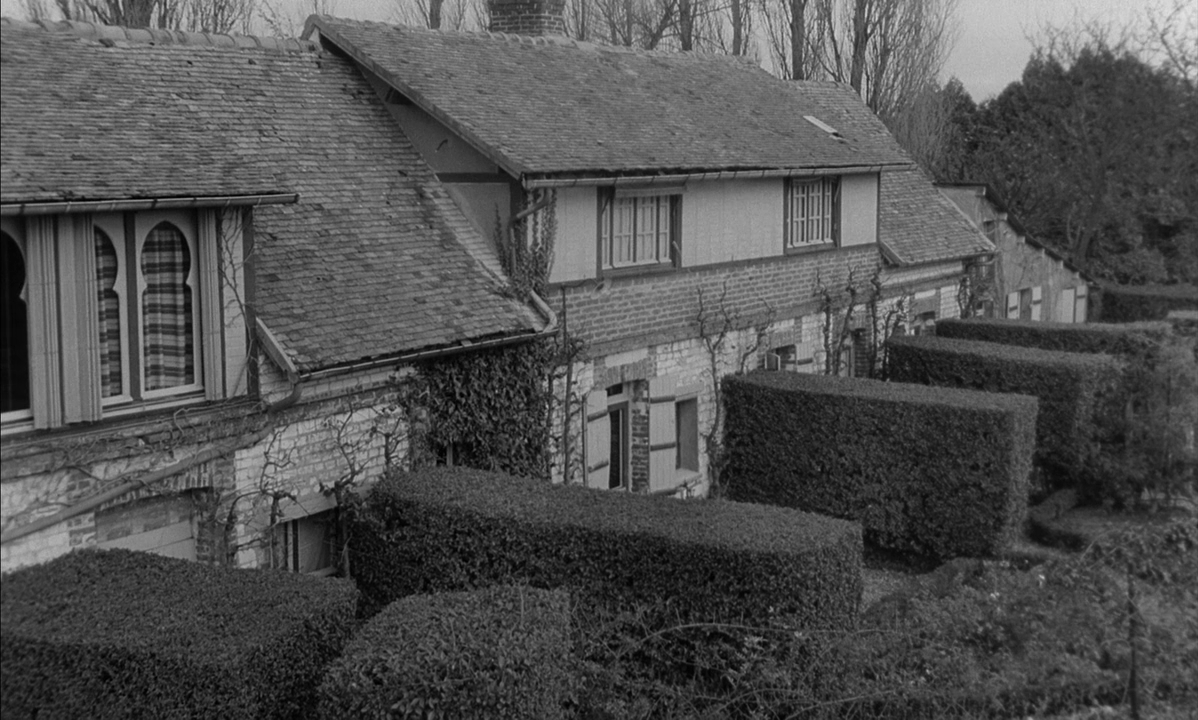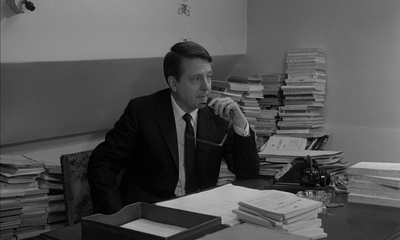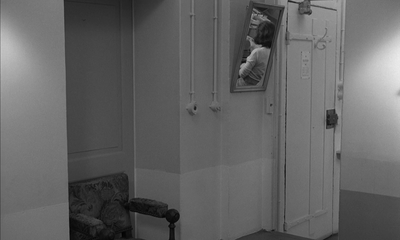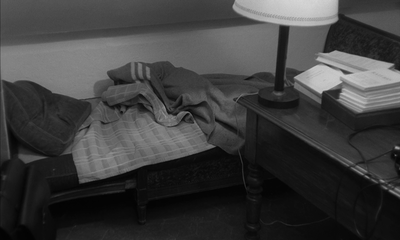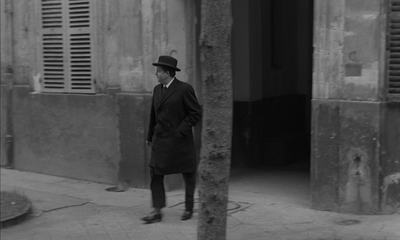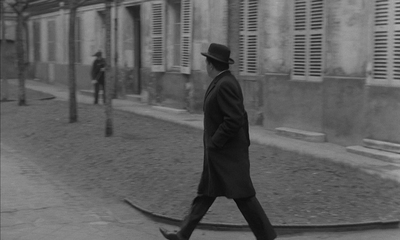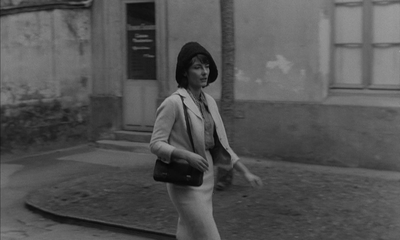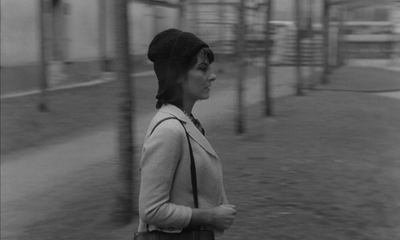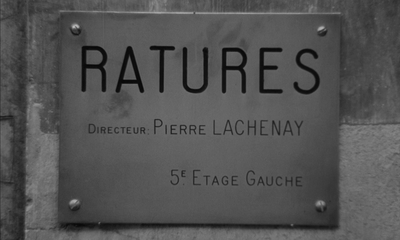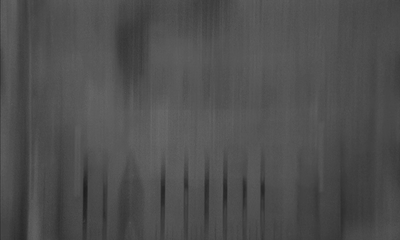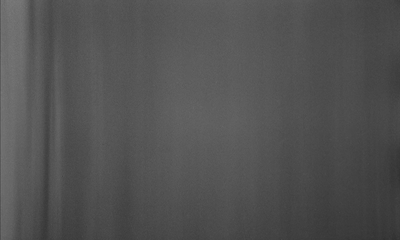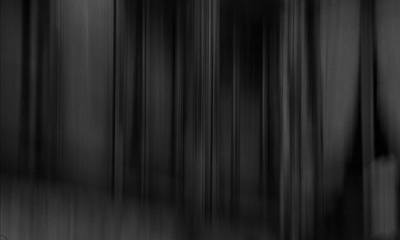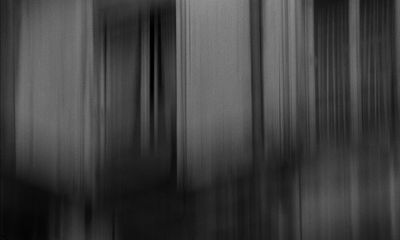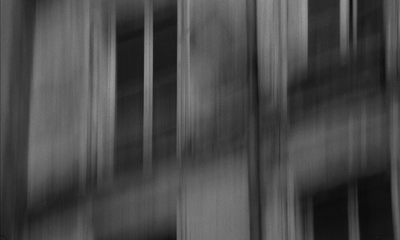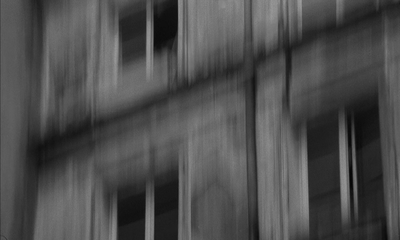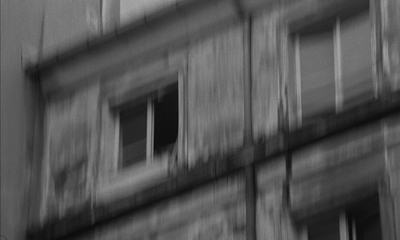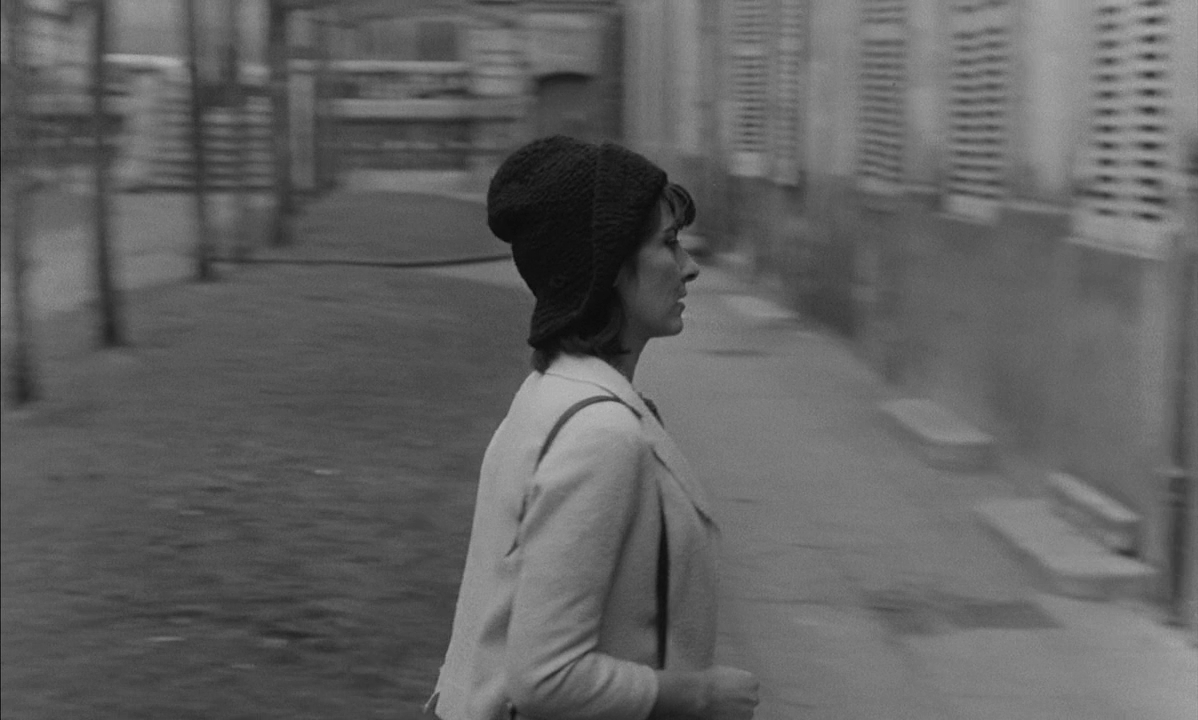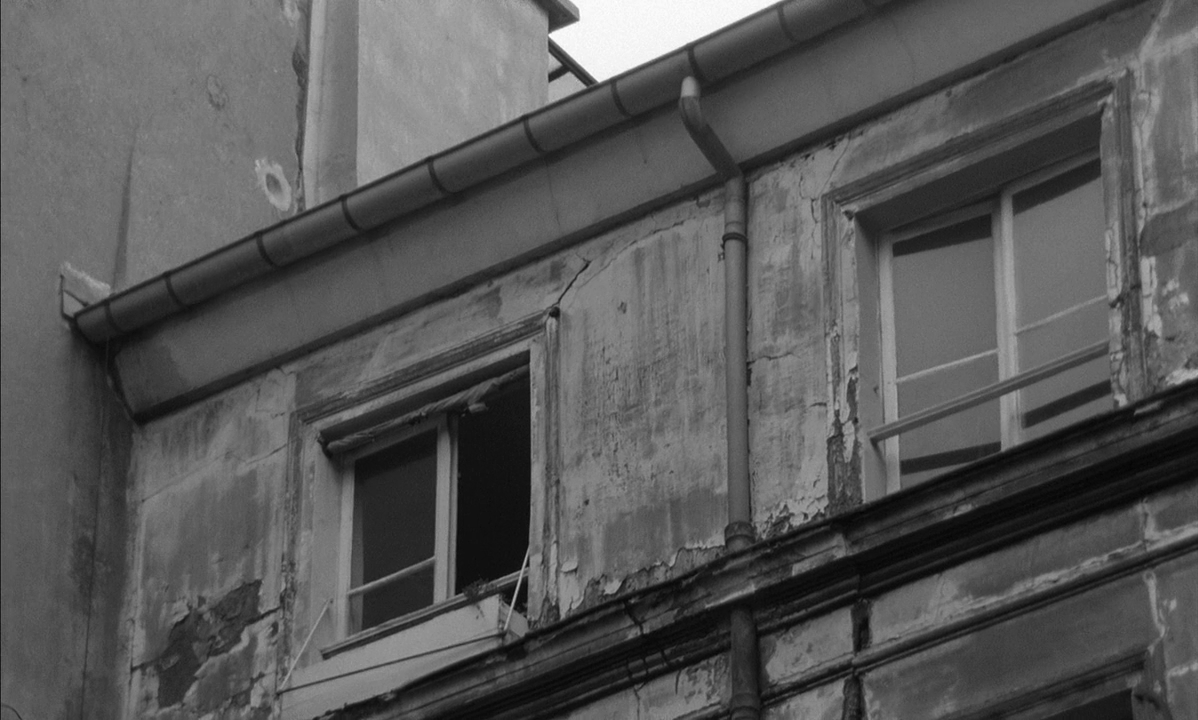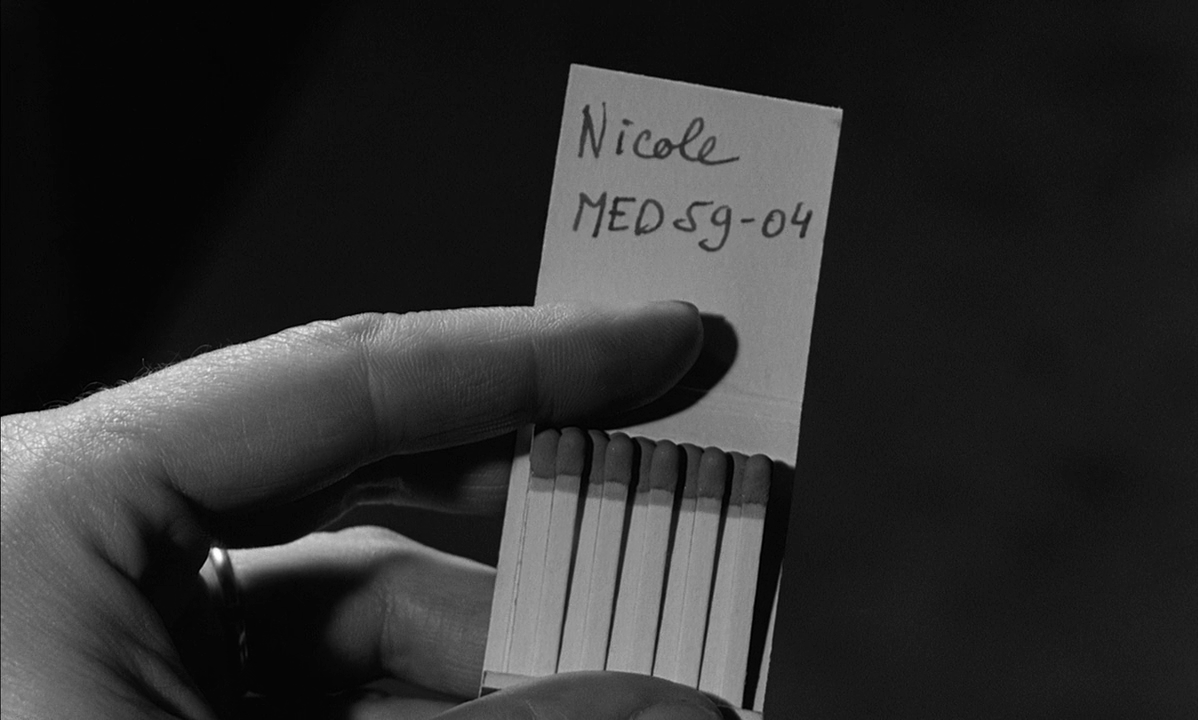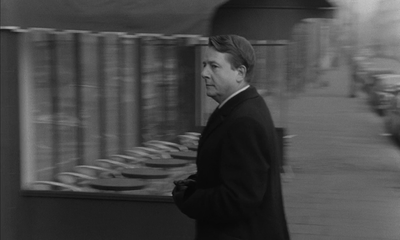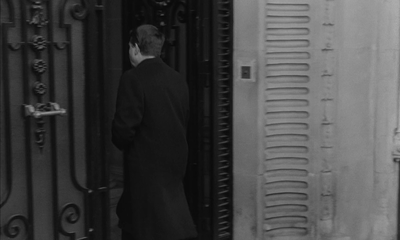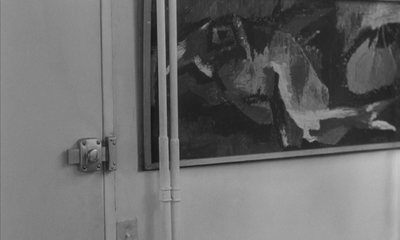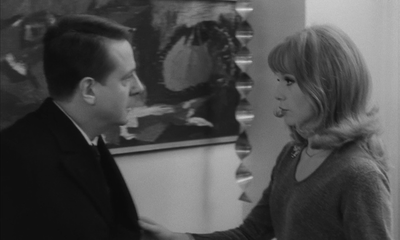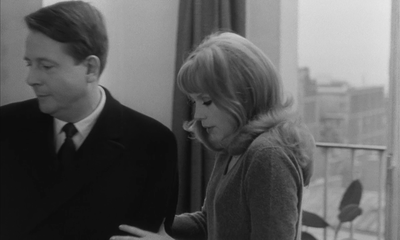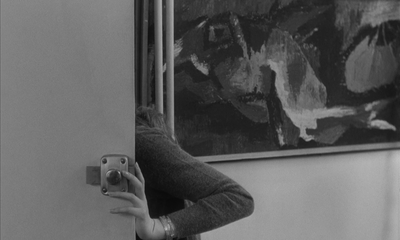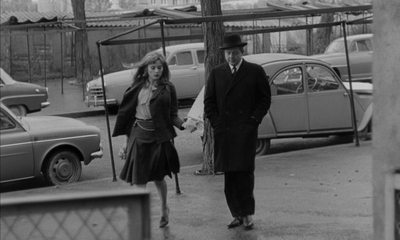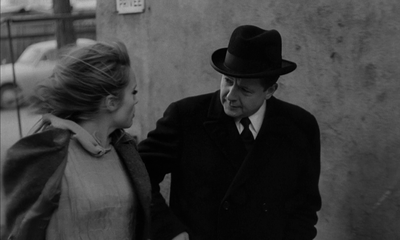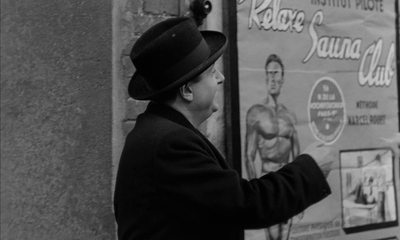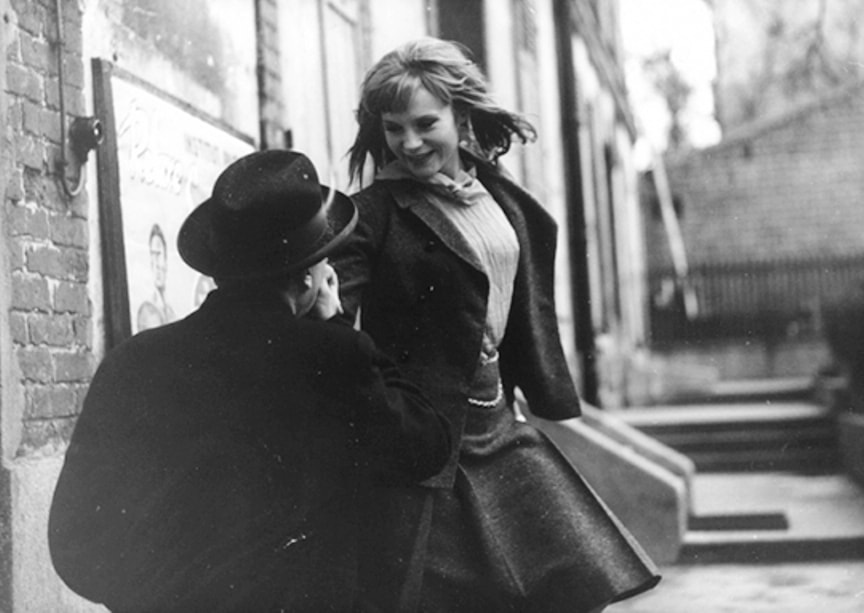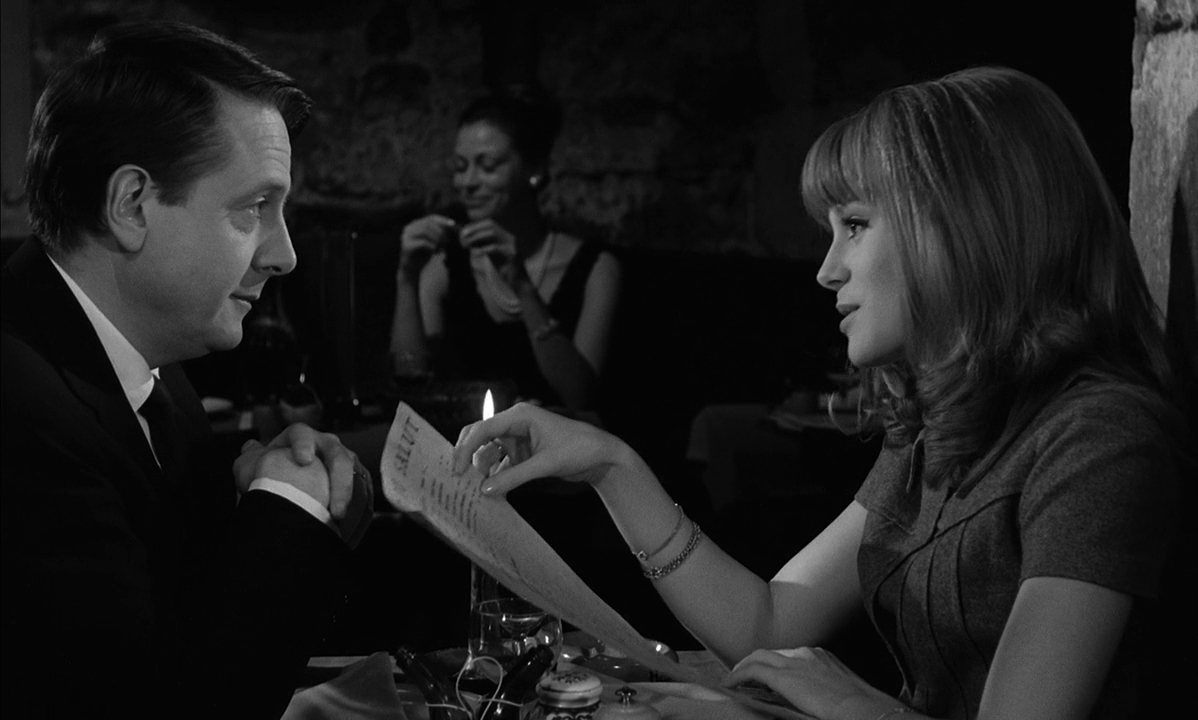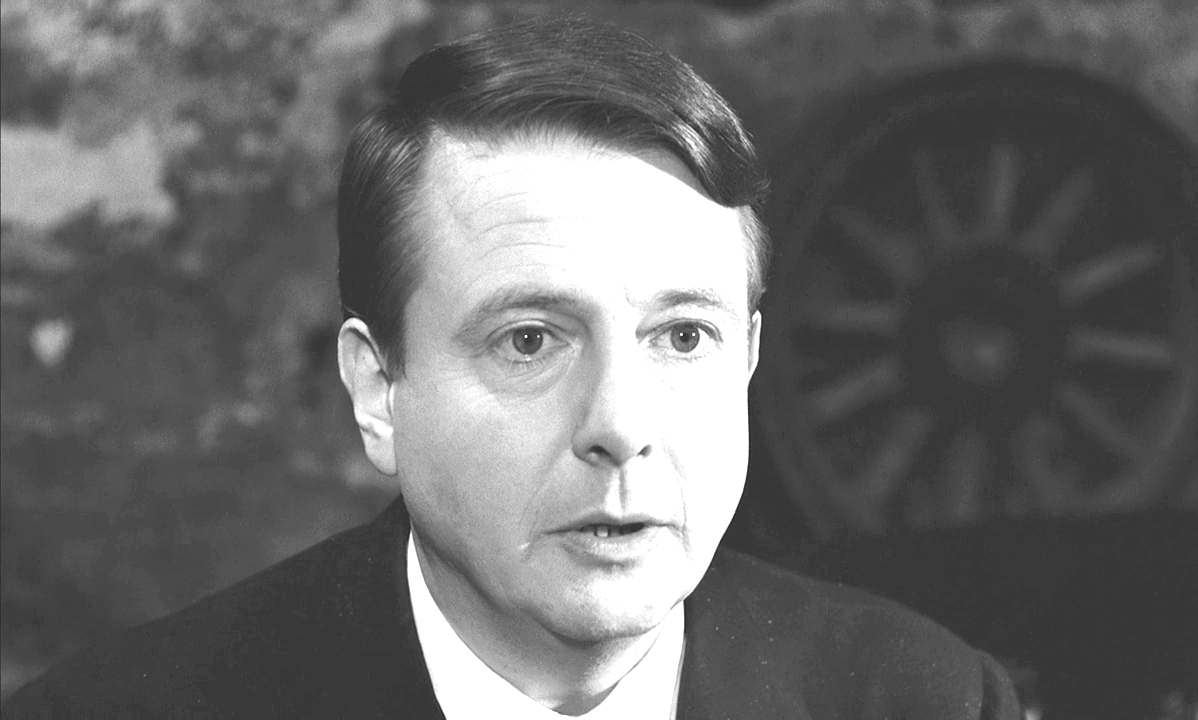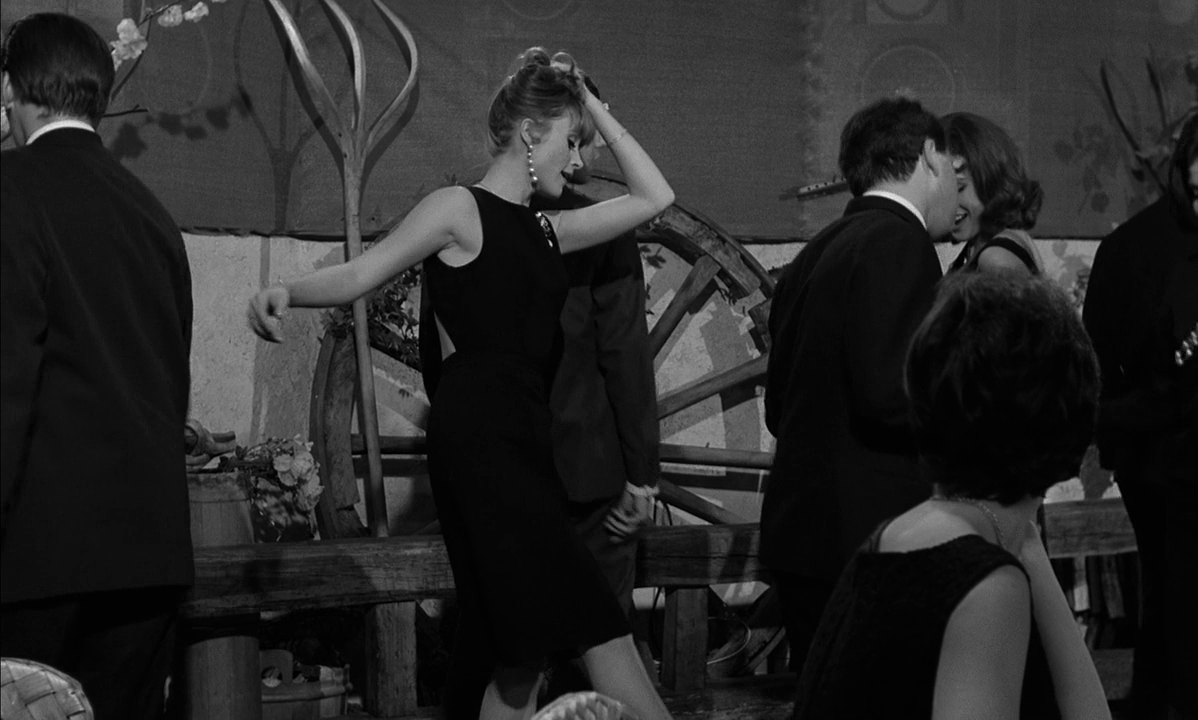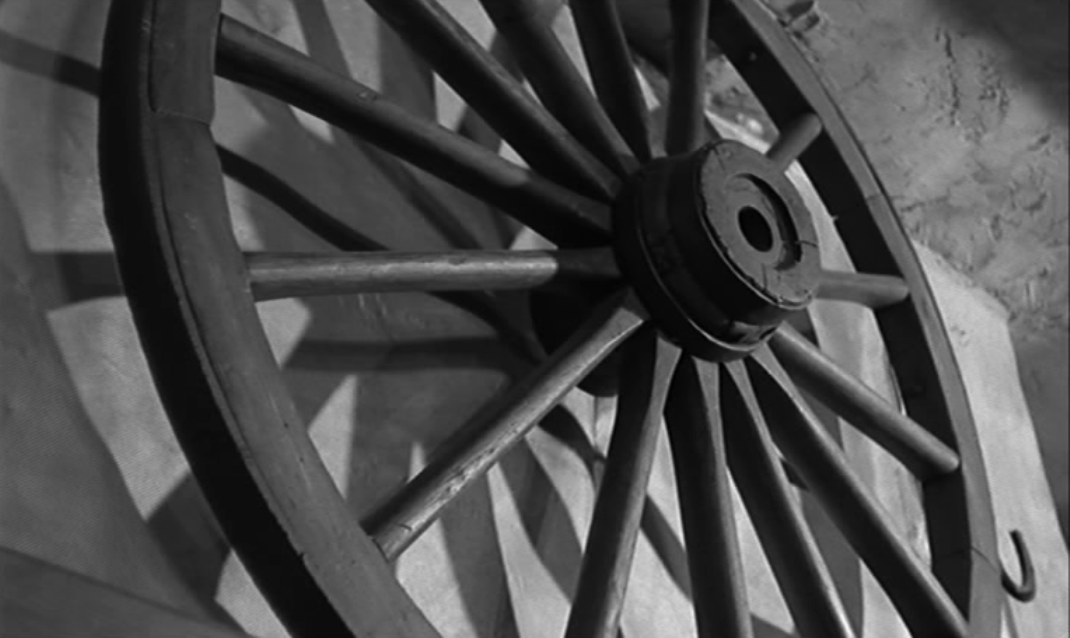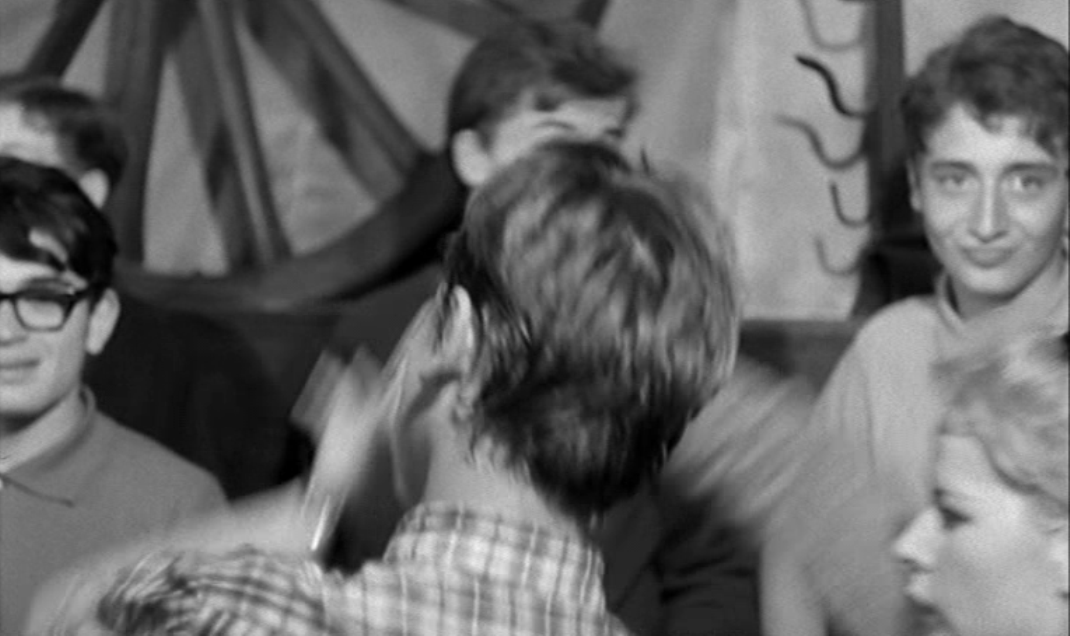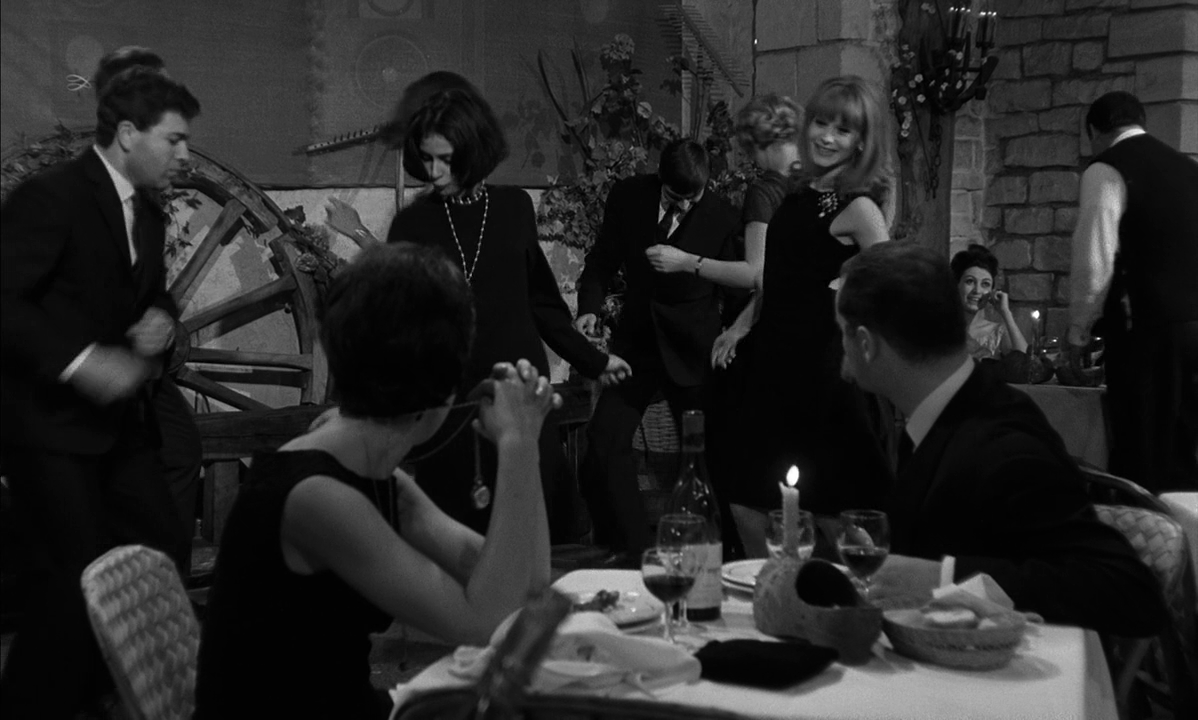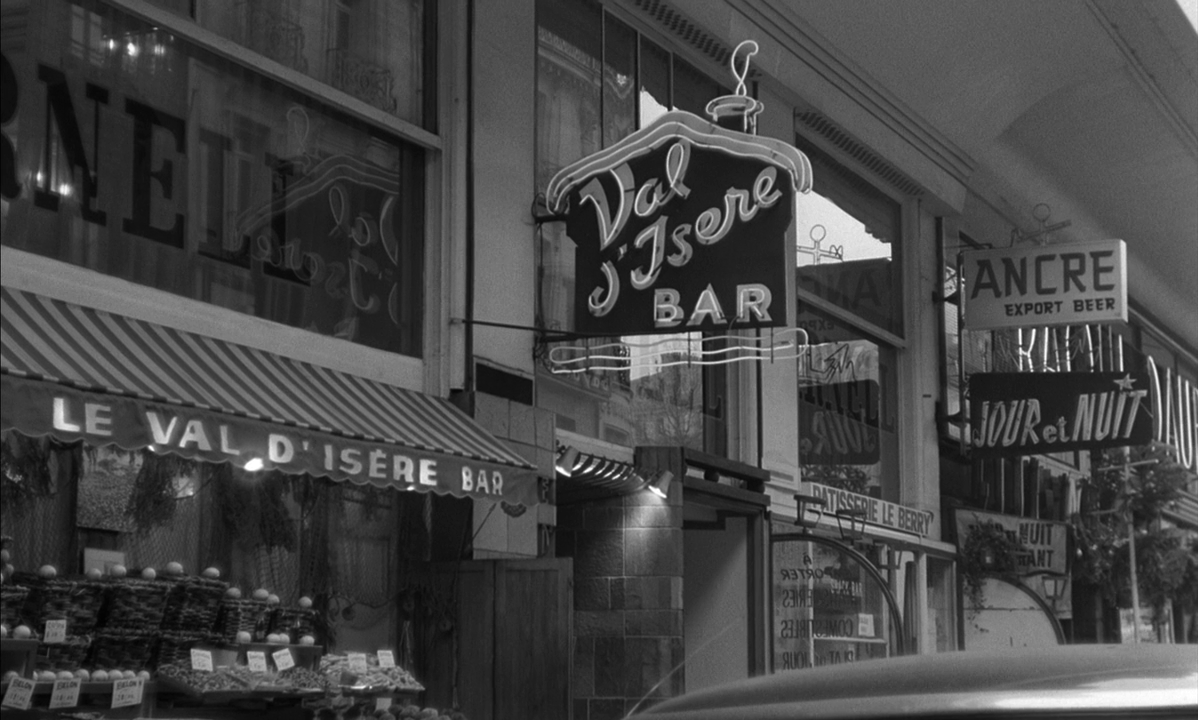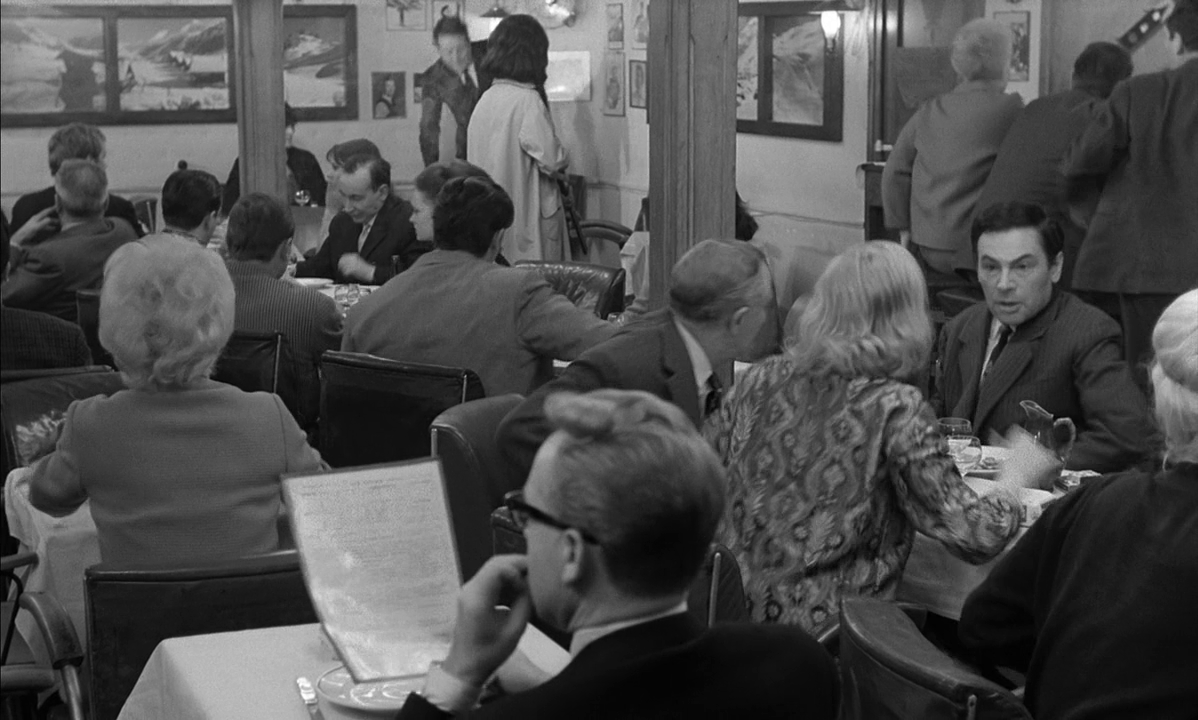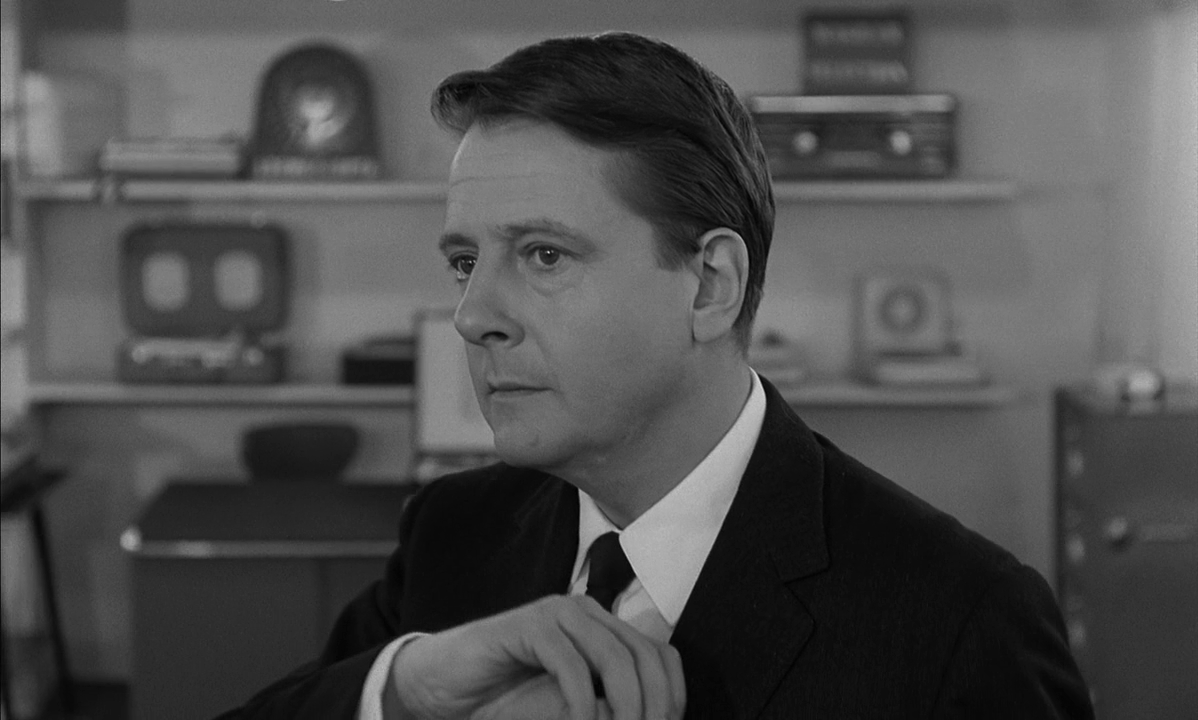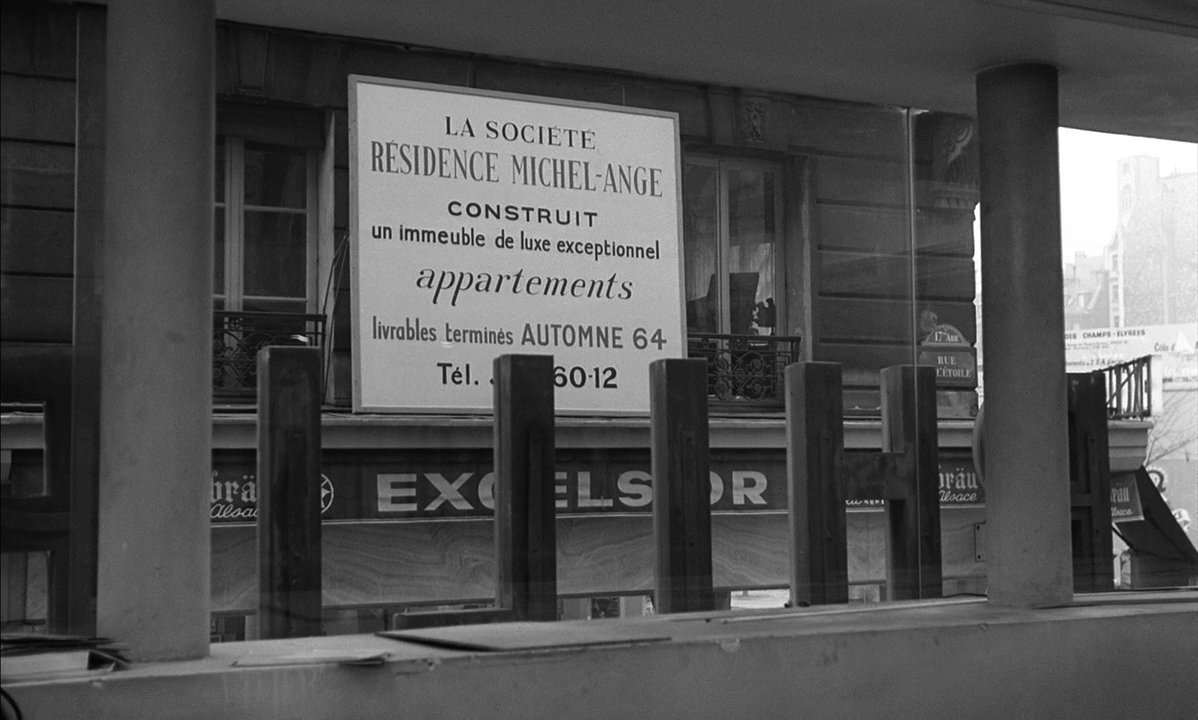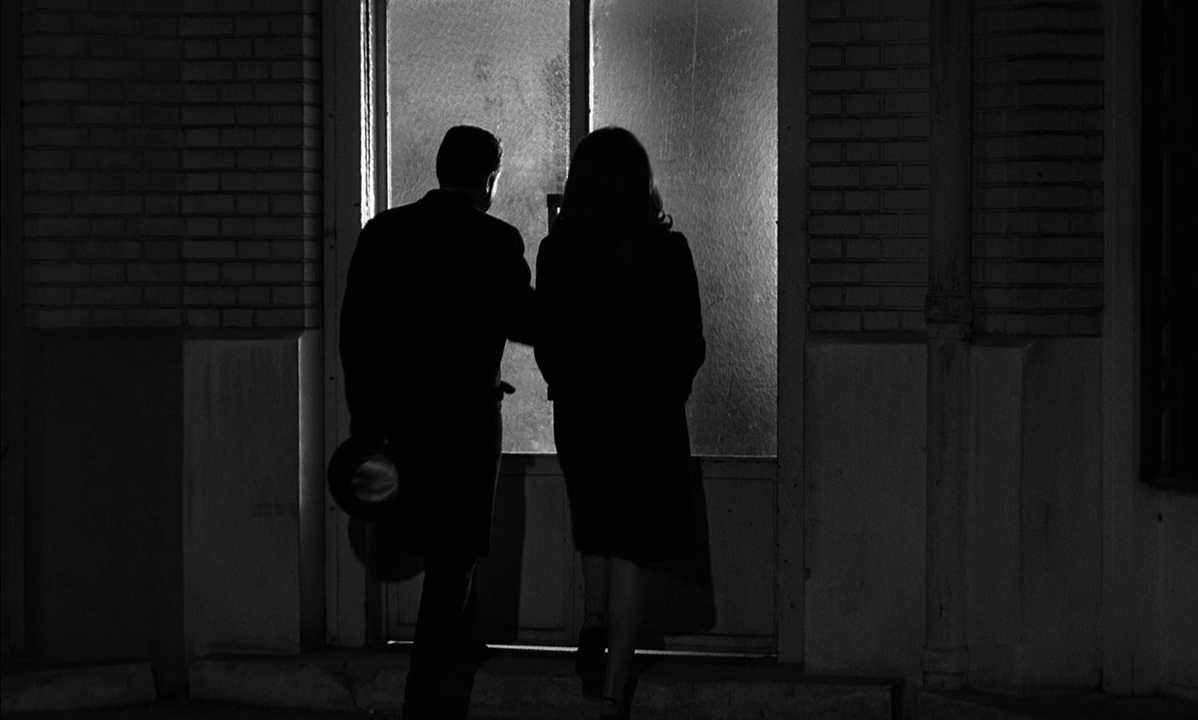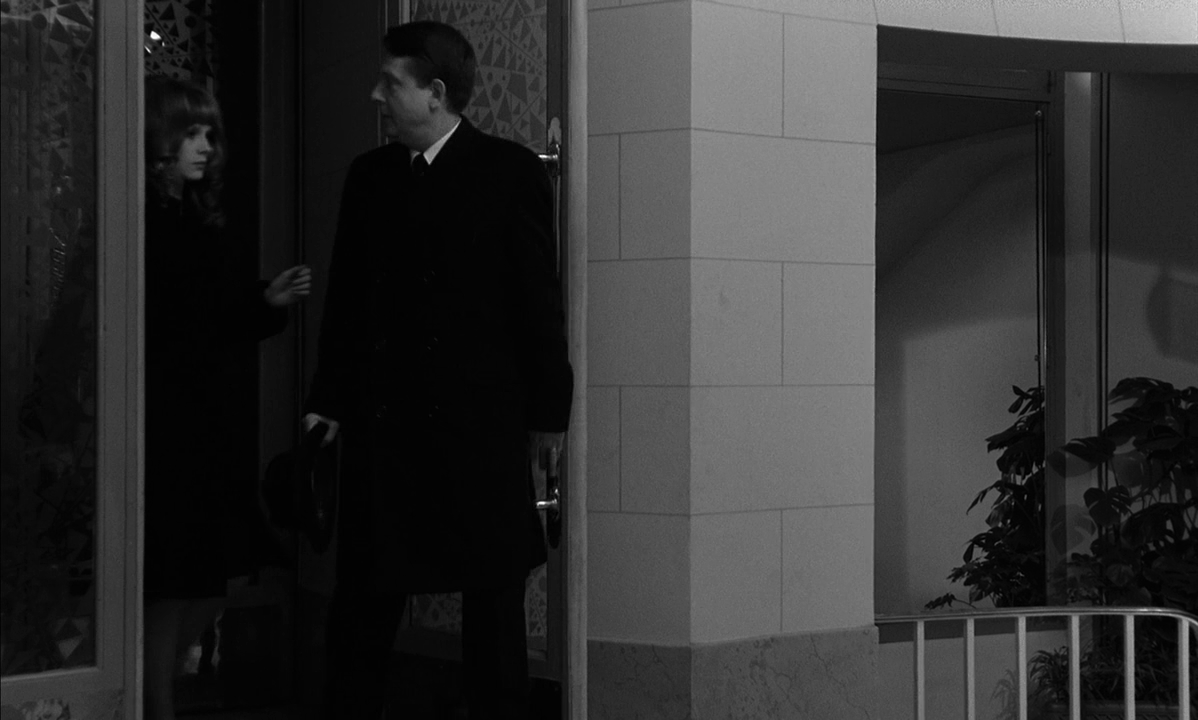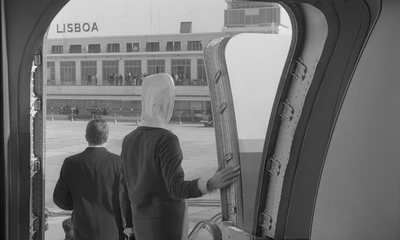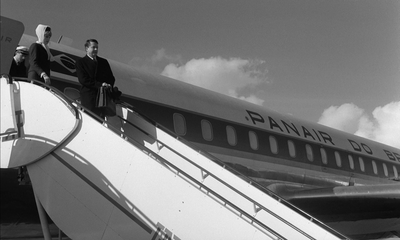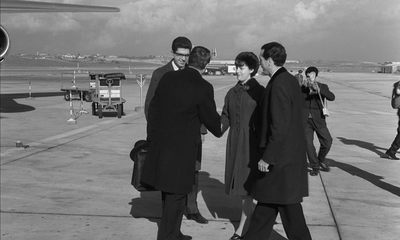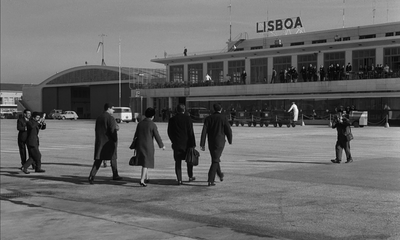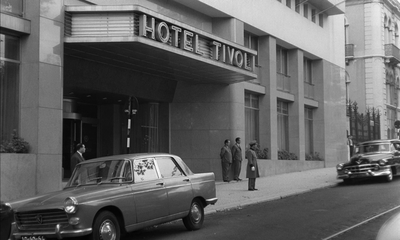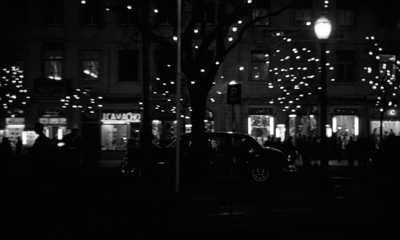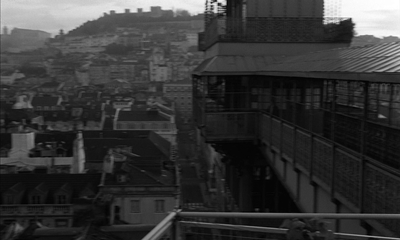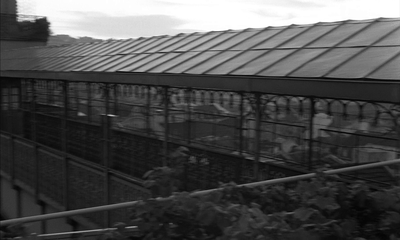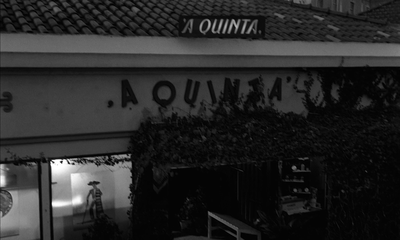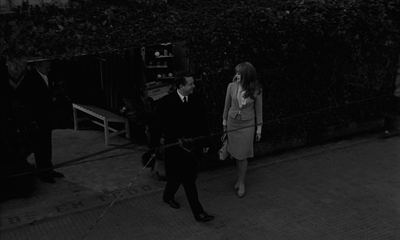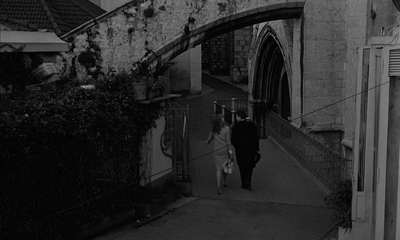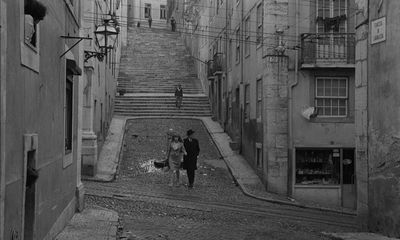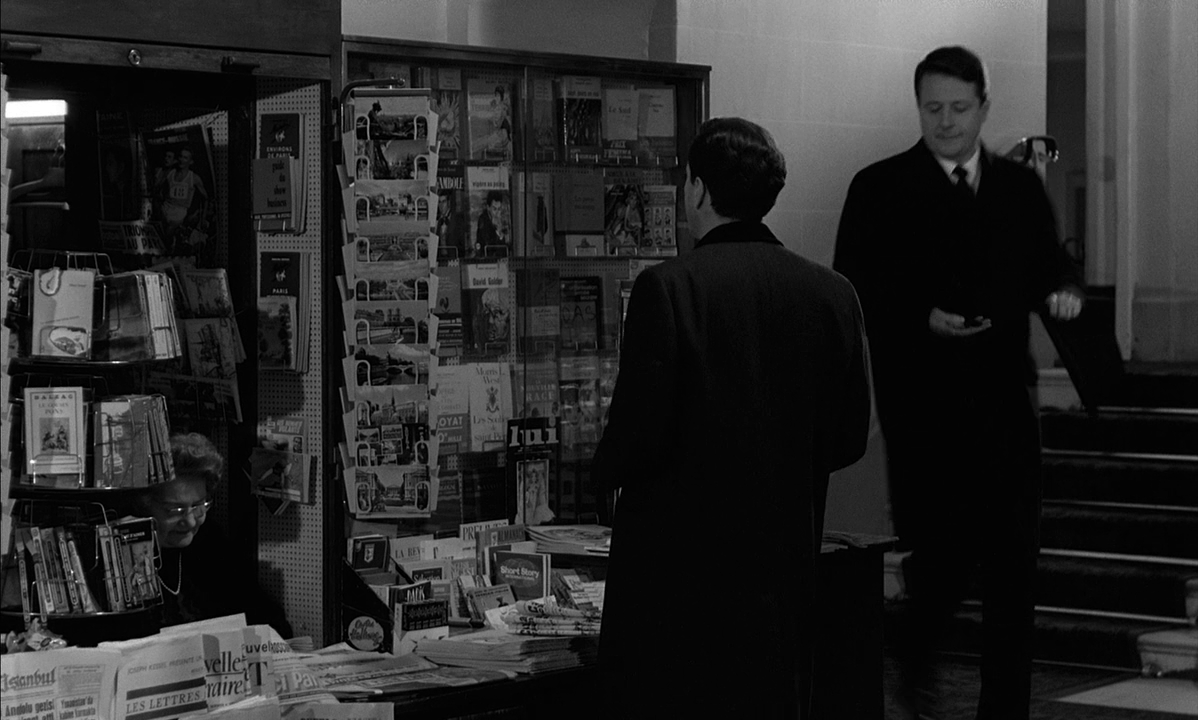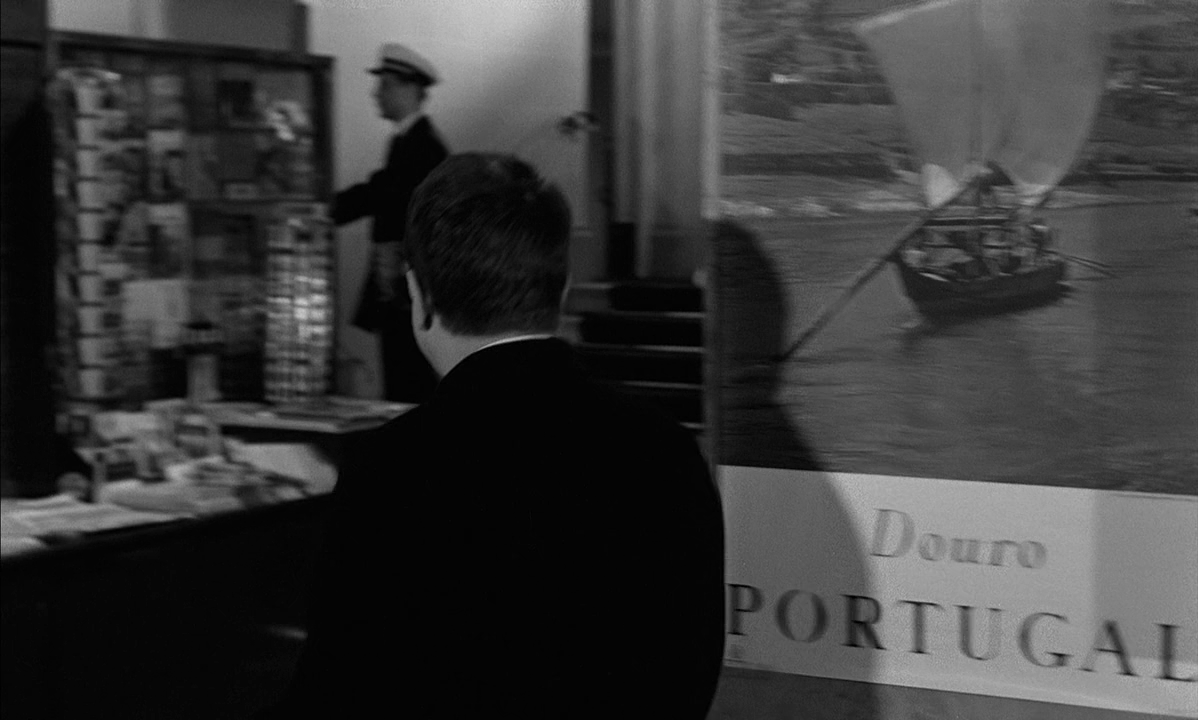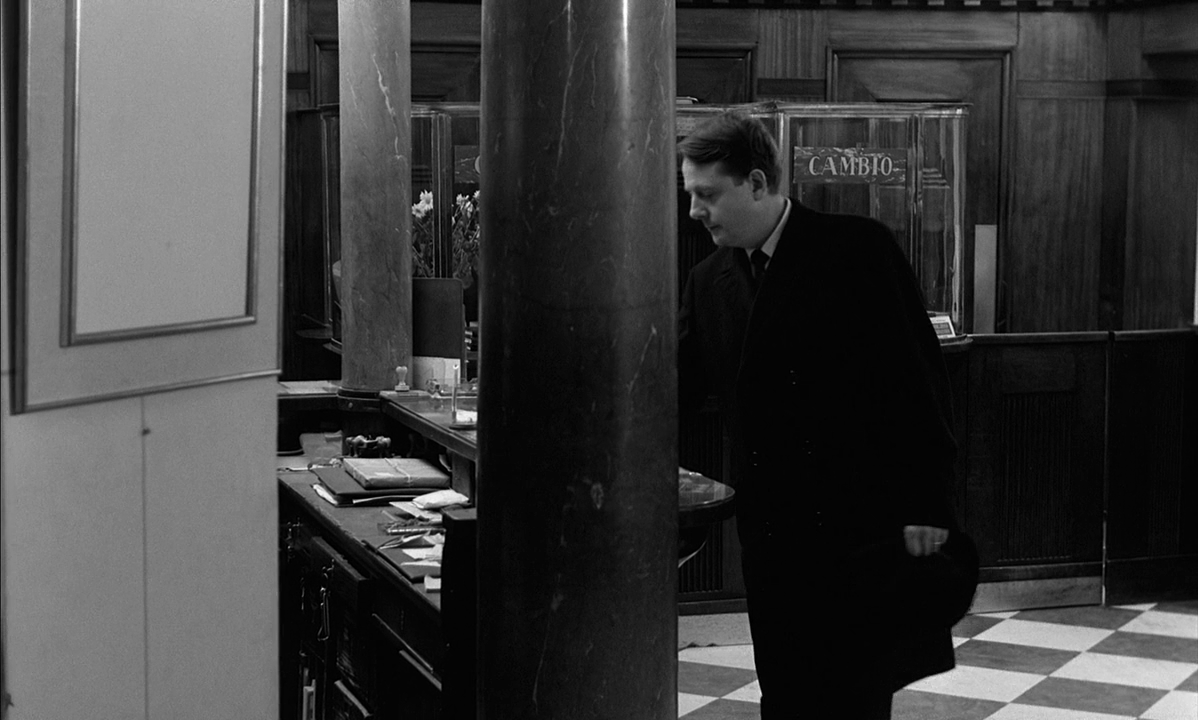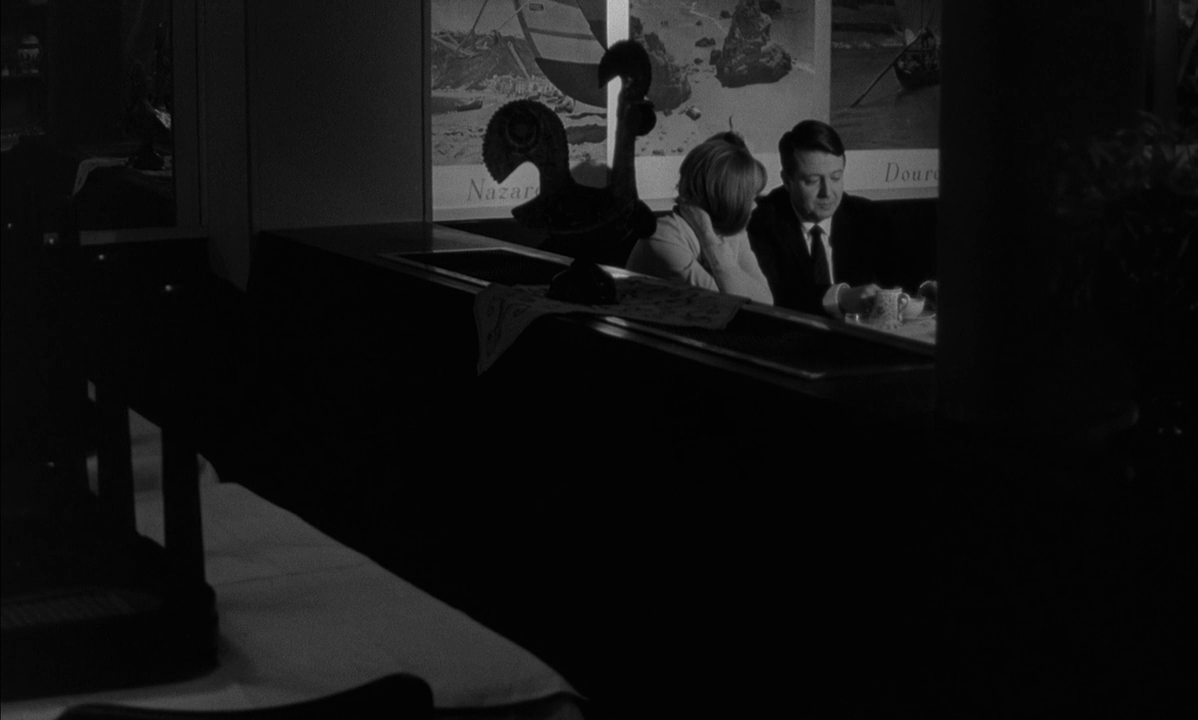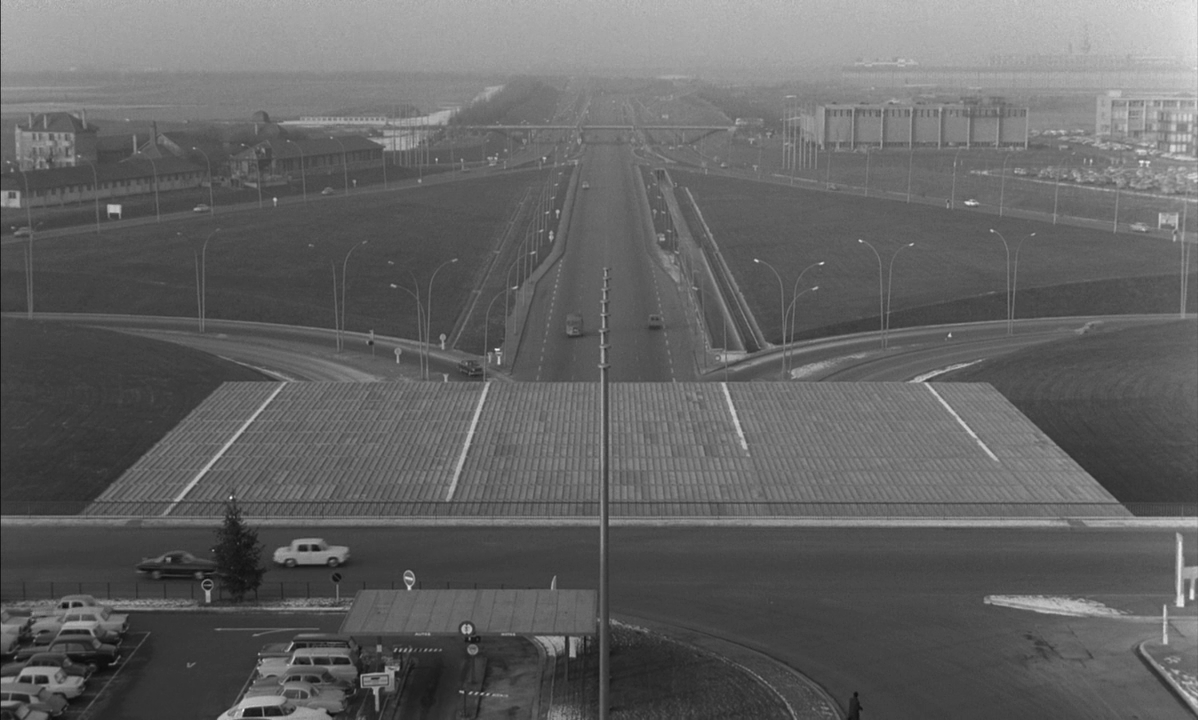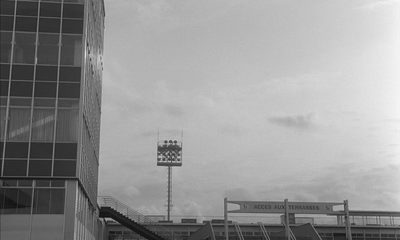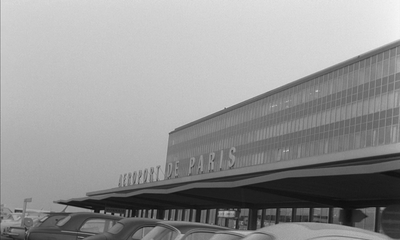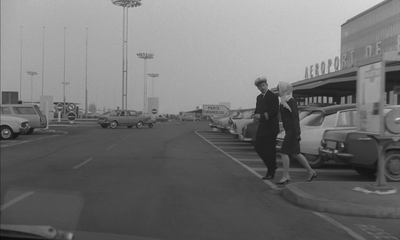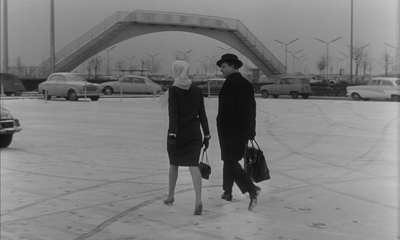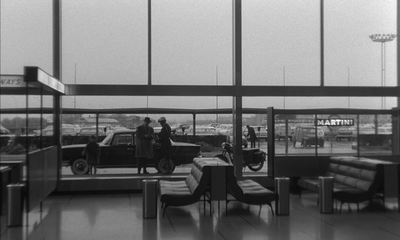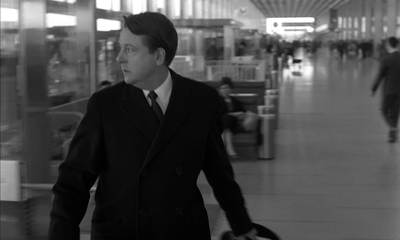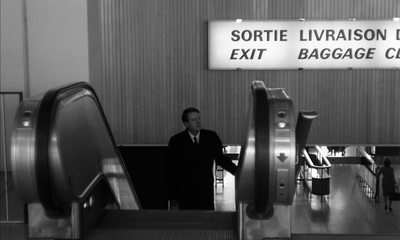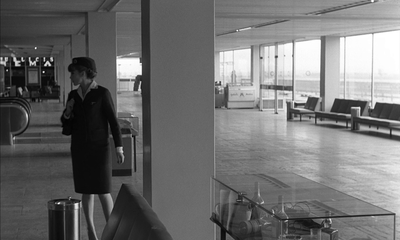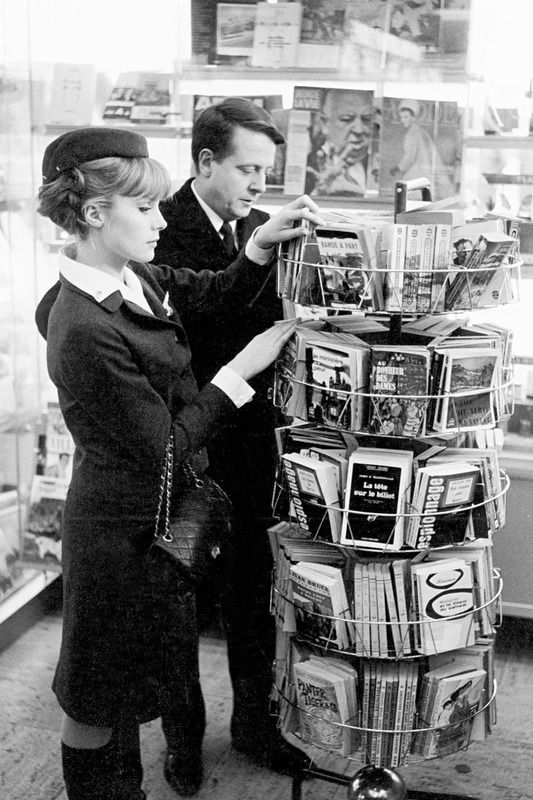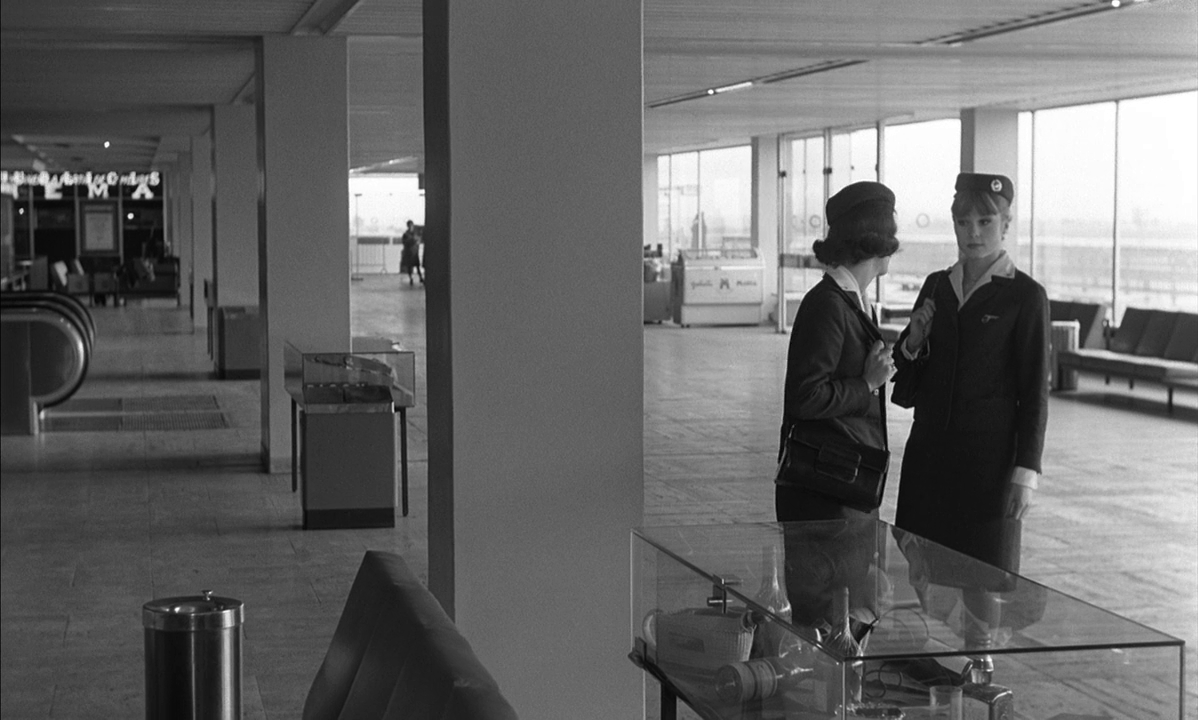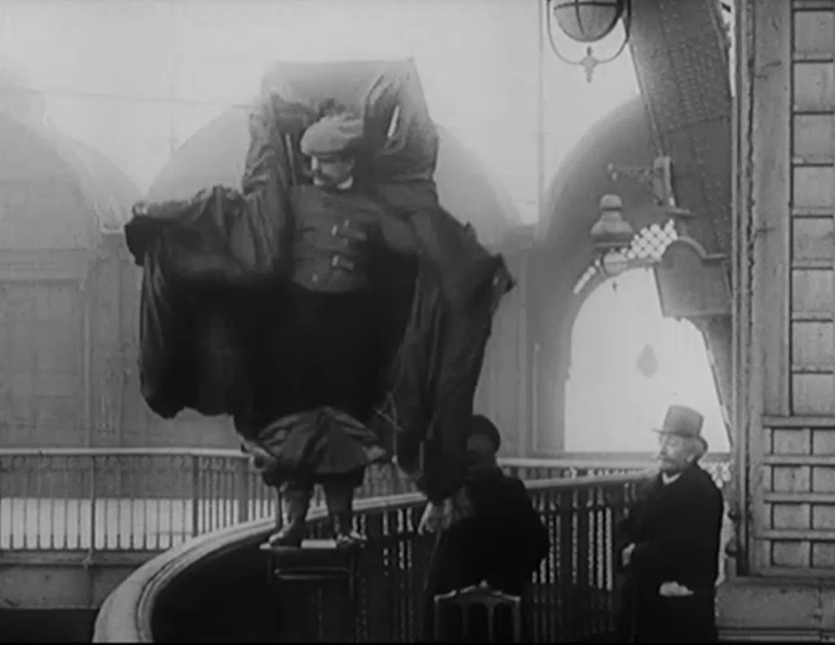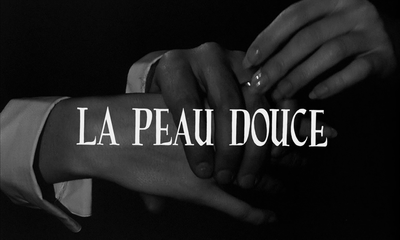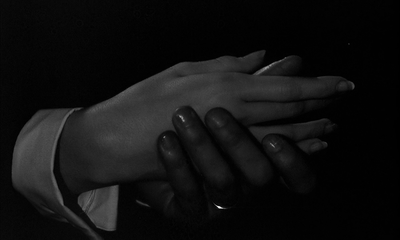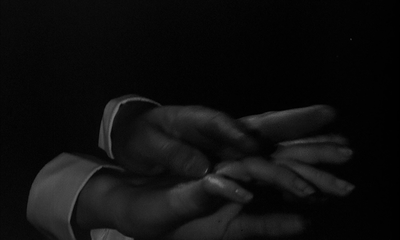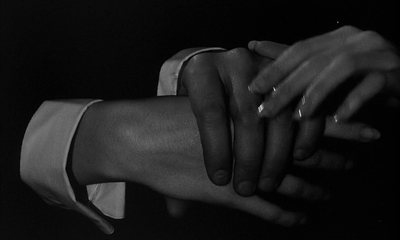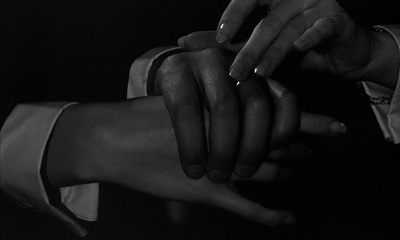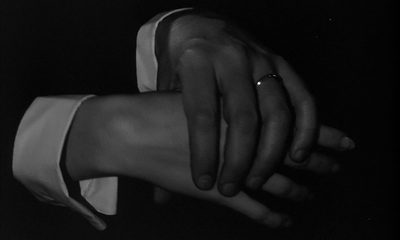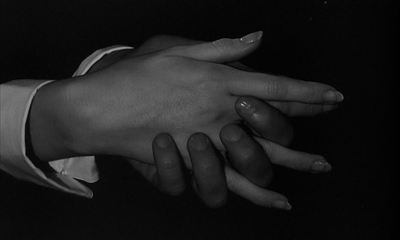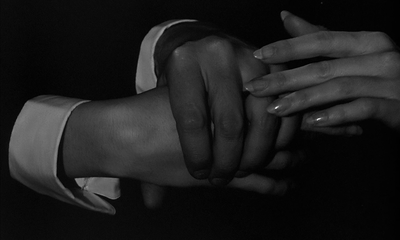|
La Peau douce -
displaced places Topographically, Truffaut's fourth feature film is somewhat disorienting. Tom Conley describes it as a 'topography of connections, displacements, and deviations': 'the events of the narrative never quite take place where they are said to happen, and when they do they seem to be in often recognizably disjoined spaces' ('A Psychogeography of Silky Cinephilia', p.458).
Though the chief interest of this topography for Conley is as ground to the film's subtly cinephilic intertextualities, this post focuses, more prosaically, on the places seen in the film, and chiefly on those in Paris or surrounding suburbs. |
1/ Paris, from Passy to La Muette
The first identifiable location is the staircase that leads up from Passy métro station onto the Rue d'Alboni. From the top of this staircase the protagonist, Pierre Lachenay, is then at a crossing in front of a florist, then at his home, 15 Rue du Conseiller Collignon:
The métro at Passy (ligne 6) is not the nearest to his home - that would be La Muette (ligne 9) - but if he has come from Odéon (where his office apparently is - see below), changing at La Motte Piquet-Grenelle, it is not illogical that he get off at Passy and walk. The topographical anomaly comes between Passy and La Muette. He crosses the street in front of Monceau Fleurs, which was (and still is) on the corner of the Boulevards Malesherbes and de Courcelles, in the 8e, about three kilometres away from Passy métro station.
An explanation might be that Truffaut wanted to show Lachenay looking anxiously at the apparatus counting down the time allowed for crossing, and that there was no such aid to pedestrians between Passy and La Muette:
An explanation might be that Truffaut wanted to show Lachenay looking anxiously at the apparatus counting down the time allowed for crossing, and that there was no such aid to pedestrians between Passy and La Muette:
This is the first instance of a recurring motif in the film - numbers:
As has been well documented and thoroughly commented, the apartment representing the protagonist's home was that of Truffaut and his family (see e.g. Hilary Radner and Alistair Fox, 'Truffaut's Apartments'). Less attention has been drawn to the location of the apartment in which Pierre plans to set up home with his lover Nicole. This was a few buildings along the street at 1 Rue du Conseiller Collignon:
Though we see very little in the film of the elegant Deco façade of no. 15 (built 1939, architect Gabriel Blanche), it is subtextually contrasted with the building under construction at no. 1 (completed 1965):
In 1961 the old-school director Gilles Grangier used the Rue du Conseiller Collignon as a location for Le Cave se rebiffe. In this shot we see Martine Carol in the foreground and Truffaut's apartment building in the background:
She is parked outside the building that would be demolished a year or two later and replaced with the building we see under construction in La Peau douce:
It is hard to imagine that Lachenay envisages living with his new love so close to where his wife would still be living, and we can conclude that we are not supposed to know that the two locations are so close. However, a view down the street from the window of the apartment at no. 15 clearly shows the new building under construction:
These two locations on the same street combine an intensely exact sense of place - Truffaut's home - and a casual indifference to topographical exactitude.
There is one other location in this area, the photographic shop on Rue François Ponsard where Pierre's wife Franca collects Pierre's compromising photographs, and where she is accosted by a dragueur:
There is one other location in this area, the photographic shop on Rue François Ponsard where Pierre's wife Franca collects Pierre's compromising photographs, and where she is accosted by a dragueur:
At the end of the film Franca drives from the Rue du Conseiller Collignon to the Rue de Berri, in four shots:
In the first she turns left into the Rue de Franqueville; in the second she is heading east on the Avenue Paul Doumer, passing the Cimetière de Passy; in the third she turns from the Avenue Pierre 1er de Serbie into the Avenue George V, heading up towards the Champs Elysées; in the fourth she turns from the Champs Elysées into the Rue de Berri. This is more or less the only sequence of locations in the film that is topographically coherent.
2/ 'Reims'
The episode set in Reims lasts more than 25 minutes; not a single minute of it is actually filmed there. When Lachenay says at the dinner in his honour that 'I've never been to Reims', he is speaking for the film.
The deception begins with the journey to Reims. A poster announcing Lachenay's talk is put up on a wall next to a sign indicating the direction:
The episode set in Reims lasts more than 25 minutes; not a single minute of it is actually filmed there. When Lachenay says at the dinner in his honour that 'I've never been to Reims', he is speaking for the film.
The deception begins with the journey to Reims. A poster announcing Lachenay's talk is put up on a wall next to a sign indicating the direction:
The RN 31 does indeed go to Reims, but that sign is not on the route between Paris and Reims to the north-east, it is at Ville d'Avray, south-west of Paris:
They are actually heading west, away from Reims:
Continuing their journey they look for a hotel in the Michelin guide entry for Reims, and choose the Hôtel Michelet. There is no Hôtel Michelet in Reims; the one they go to is at 6 Place de l'Odéon in Paris, near the Théâtre de l'Odéon:
Pierre has to go to dinner at the 'Grand Hôtel', of which there is none in Reims. What we see, instead, is the Hôtel Trianon Palace at Versailles:
This hotel has its place in cinema history, appearing in Feuillade's first Fantômas film (1913), in Vadim's Le Vice et la Vertu (1963), in Jean-Louis Richard's Mata Hari (1964), in Chabrol's 'L'Homme qui vendit la tour Eiffel' (1965) and in Chabrol's Betty (1992), among others (see here).
There are several views of Pierre driving to one or other of these 'Reims' hotels. These shots are in Paris, on the Place de l'Odéon:
I think these shots are Versailles though I haven't located them yet:
On the way from one hotel to another Pierre goes to buy a pair of stockings for Nicole in a shop that is in Paris, at 18 Rue de Marignan, 8e, off the Champs Elysées:
Pierre is supposed to introduce a film in a cinema in Reims called Le Capitole. The cinema is in fact the culturel centre at Suresnes:
|
There actually was a cinema in Suresnes called Le Capitole, which suggests to me that the original plan had been to use that cinema - a poster features bearing its name - and that at some point they switched to the 'Centre Culturel de l'Ouest Parisien', not showing its façade so this distinctive and famous theatre wouldn't be recognised.
The capacity of the Capitole was 900, that of the Centre Culturel 1200, so in either case the fiction that the hall was full for a screening of a documentary about André Gide, even introduced by a famous literary critic, lacks verisimilitude. |
The views of a packed auditorium were not filmed for La Peau douce; Truffaut took them from his previous film 'Antoine et Colette' (1962), where they show an audience at the Salle Pleyel in Paris (capacity 2400):
Several street views and a café are also in Suresnes:
As Pierre and his host Clément are walking on a street near the theatre in Suresnes, Truffaut effects a sleight-of-hand (or of foot, more exactly) to make a transition from one location to another. Clément discovers that his shoe lace is broken and bends to tie it, putting his foot on a car bumper. The next shot shows his foot on a car bumper from a different angle, but across this cut the film has moved from a street in Suresnes to a street in Paris, allowing their walk to take them from the theatre to the Hôtel Michelet:
Remarkably, the two cars in the two streets are very similar Chevrolets, a continuity match where a discontinuity mismatch would, in the dark, surely have gone unnoticed.
After Pierre leaves the hotel in Paris he rejoins Clément in Suresnes, the transition effected by a cut to darkness requiring no elaborate staging:
After Pierre leaves the hotel in Paris he rejoins Clément in Suresnes, the transition effected by a cut to darkness requiring no elaborate staging:
This last shot follows the two back up the street to a cut that once more takes them across a considerable distance, from Suresnes to the Hôtel Trianon-Palace in Versailles. The topographical incongruity across the cut is, again, hidden in undifferentiable darkness:
|
3/ 'La Colinière'
After leaving the 'Hôtel Michelet' in 'Reims', passing the 'Grand Hôtel' as they leave the town, Pierre and Nicole drive to another hotel, with no indication as to where it is supposed to be. The place we see is a hotel called Les Saisons at Vironvay, near Louviers (Eure) - nowhere near Reims, of course, though not far from locations used in Jules et Jim.
|
4/ Paris - rive gauche
The Hôtel Michelet is just one of several locations in the vicinity of the Théâtre de l'Odéon, which was a base of sorts for the production because the principal actor Jean Desailly was during some part of the shoot appearing in The Cherry Orchard at that theatre in the evenings. Truffaut says that they used an administrative office at the theatre as the office of the journal edited by Lachenay:
I don't know whether they only used these premises for the interiors or if the courtyard leading to the building where he has an office was also associated with the Théâtre de l'Odéon. I haven't found this location in that vicinity:
The ground floor of the building we see is not contiguous with the top floor we are shown. A whip-pan upwards from the name-plate by the door thinly disguises a cut - between the third and fourth frame below:
So these premises are composed of three different locations. The interior is an office at the Théâtre de l'Odéon, the exterior is two unidentified buildings:
The interior, according to the Toubiana/Baecque biography, was the apartment of Florence Malraux on the rue du Télégraphe, 20e. A great deal was shot in this interior, but only a single, 70-second shot made it to the final edit:
Pierre meets Nicole somewhere near his place of work. Behind them are frames used for a street market, and they walk towards an alley ('voie privée'). Nicole says she is on her way to a gym class, and we see a poster for the 'Relaxe Sauna Club', the implication being that this is where she is going. The Relaxe Sauna Club was at 56 rue de La Rochefoucauld, 9e, but that has not so far provided a clue as to where it is they meet in this sequence:
A production still shows the other end of the alley, but again this has not yet proved helpful:
There are two scenes with Pierre and Nicole in restaurants. The second can be identified as 'Au Port du Salut' from the menu card they consult:
This was a restaurant-cum-cabaret on the rue Saint Jacques, 5e. I haven't identified the other restaurant, which appears much earlier in the film, but it is just possible that it is also the Port du Salut. The one element in common to both décors is a cartwheel, only just visible behind Pierre in the second restaurant scene (below left - I have lightened the image), and a central part of the décor in the first restaurant scene:
I know this is not the same cartwheel, and there is no reason to think that cartwheels were the exclusive decorative feature of a single restaurant. A cartwheel can be seen as part of the décor of a club (referred to as 'Le Relais') in Jean Rouch's Les Veuves de 15 ans (1965), and I don't think this is the same as either of the places in La Peau douce:
The first restaurant in La Peau douce has a rustic theme to its décor - there are farming implements fixed to the wall and clogs on the tables:
My guess, given those clogs, is that this is Le Sabot, at 2 rue du Sabot, 6e.
5/ Paris - rive droite
Pierre habitually lunches at the Val d'Isère restaurant on the Rue de Berri, 8e, which is where his wife kills him:
The shop where Pierre buys stockings for Nicole, supposedly in Reims, is on Rue de Marignan, a short distance from here across the Champs Elysées. At 25 Avenue de Wagram, not too far away, is the shop where, in a deleted scene, Pierre buys a record player for Nicole. All that survives of this scene in the film are these two shots:
The hotel where Pierre and Nicole attempt to get a room is presented as nearby - they pass the Arc de Triomphe and turn into and park on or near the Avenue Foch. I haven't been able to locate in this vicinity the building they enter:
There are in fact two locations to be found for this scene, since this is again a composite: the exterior above left is not that of the interior above right - the doors don't match. I suspect that this exterior is not in Paris at all but back in Suresnes. The brickwork of the building is very like that of many in the cité-jardin:
6/ Lisbon
These are the views resulting from the shoot in Lisbon:
This array of authentic exteriors is complemented by as many inauthentic interiors, all of which seem to have been filmed in Paris. The most obvious non-sequitur is the lobby of Lisbon's Hotel Tivoli, with a newsstand that is clearly in the foyer of a hotel in Paris:
Among the publications on sale here are a Paris street guide, the Michelin guides to Paris and to the Environs of Paris and the newspaper Ici Paris. A copy of Balzac's novel Le Cousin Pons may have been put on prominent display because Lachenay has come to Lisbon to talk about 'Balzac and Money', but that doesn't explain why this newsstand in Lisbon is selling Ponson du Terrail's Rocambole, Irène Némirovsky's David Golder, Hervé Bazin's Vipère au poing, Yves Berger's Le Sud, Michel de Saint-Pierre's La Nouvelle Race and Robert Buchard's history of the O.A.S., among many other books in French. Also, the postcards are all of Paris sights.
This newsstand is in the foyer of the Hôtel Lutetia in Paris. A Portugal-related poster has been placed to sustain the fiction:
This newsstand is in the foyer of the Hôtel Lutetia in Paris. A Portugal-related poster has been placed to sustain the fiction:
This same poster reappears in the restaurant where Pierre and Nicole dine, the exterior of which is in Lisbon (A. Quinta, Passarelle do Elevador de St Justa 2), the interior probably in Paris:
In a 1983 interview Truffaut spoke of the composite construction of locations in this film, though he misremembers almost every element of the Lisbon hotel composition: 'All the settings in the film are natural. Only, every scene in the screenplay required a very precise setting. It was necessary to find them all. For example, a whole part of the film takes place in a hotel in Lisbon. One sees the hall, the elevator, the corridor, the rooms. We shot the rooms at Orly, the hall in Lisbon, and the elevator at the Lutétia Hotel in Paris' (Truffaut On Cinema, p.121). The information in the Toubiana/Baecque biography is more accurate: 'The scenes of the Lisbon hotel where Pierre first meets Nicole, and Lachenay's lecture, were actually filmed at the Hotel Lutetia in Paris. The famous elevator sequences, cut and edited in a Hitchcockian rhythm, were taken at the renowned Roux and Combalusier [sic] elevator factory in Paris' (Truffaut, p.204).
The Hôtel Lutetia was at the junction of the Boulevard Raspail and the Rue de Sèvres, 9e; the Roux and Combaluzier factory was on the Rue Tiphaine, 15e.
7/ Orly
Eight minutes of La Peau douce are spent at or on the way to Orly airport, across four different sequences, with exterior and interior views:
|
A great deal more time would have been spent here if sequences at the airport's bookshop and cinema hadn't been cut. A still from the bookshop sequence shows Pierre and Nicole looking for a copy of Maurice Leblanc's 813, an Arsène Lupin adventure. They don't find it but we are offered a number of alternative intertexts, including Zola's Au bonheur des dames, Graham Greene's Ministry of Fear, John D. Macdonald's A Key to the Suite, Simenon's Maigret et le client du samedi, Kurt Tucholsky's Panter, Tiger & Co and Jacques Perret's Bande à part. Nicole has her hand on this last book, an allusion to Godard's film of the same name, even though the film has no connection with the book. There is also a strategically placed issue of Le Monde et la Vie with Hitchcock on the cover. |
The suppressed sequence in the Publicis cinema at Orly followed on from the bookshop sequence. We see the entrance to the cinema in the background of this shot:
|
The published script includes descriptions of the suppressed scenes, so we know that in the cinema they were shown to be watching Nicole Vedrès's 1947 montage-film Paris 1900, specifically the section with Franz Reichelt, the man who in February 1912 died after jumping from the Eiffel Tower in a parachute suit of his own design. Pierre make a facile and erroneous remark about Reichelt being 'one of the first victims of cinema'.
Truffaut had used other elements from Paris 1900 in Jules et Jim - see here. |
The credit sequence of La Peau douce shows hands touching in the dark. This, I think, is a vestige of the suppressed cinema scene:
References
- Tom Conley, 'A Psychogeography of Silky Cinephilia', in Dudley Andrew and Anne Gillain (eds), A Companion to François Truffaut (Oxford: Wiley-Blackwell, 2013)
- Hilary Radner and Alistair Fox, 'Truffaut's Apartments', in Alastair Phillips and Ginette Vincendeau (eds), Paris In the Cinema: beyond the flâneur (London: BFI/Palgrave Macmillan, 2018)
- Roland-François Lack, 'The New Wave Hotel', in Alastair Phillips and Ginette Vincendeau (eds), Paris In the Cinema: beyond the flâneur (London: BFI/Palgrave Macmillan, 2018)
- Carole Le Berre, François Truffaut At Work London: Phaidon, 2005)
- Serge Toubiana and A. de Baecque, Truffaut (New York: Alfred A. Knopf, 1999)
- François Truffaut, 'La Peau douce, découpage', L'Avant-Scène Cinéma, 48 (mai 1965)
- François Truffaut, Truffaut On Cinema, ed. Anne Gillain (Indianapolis: Indiana University Press, 2017)

